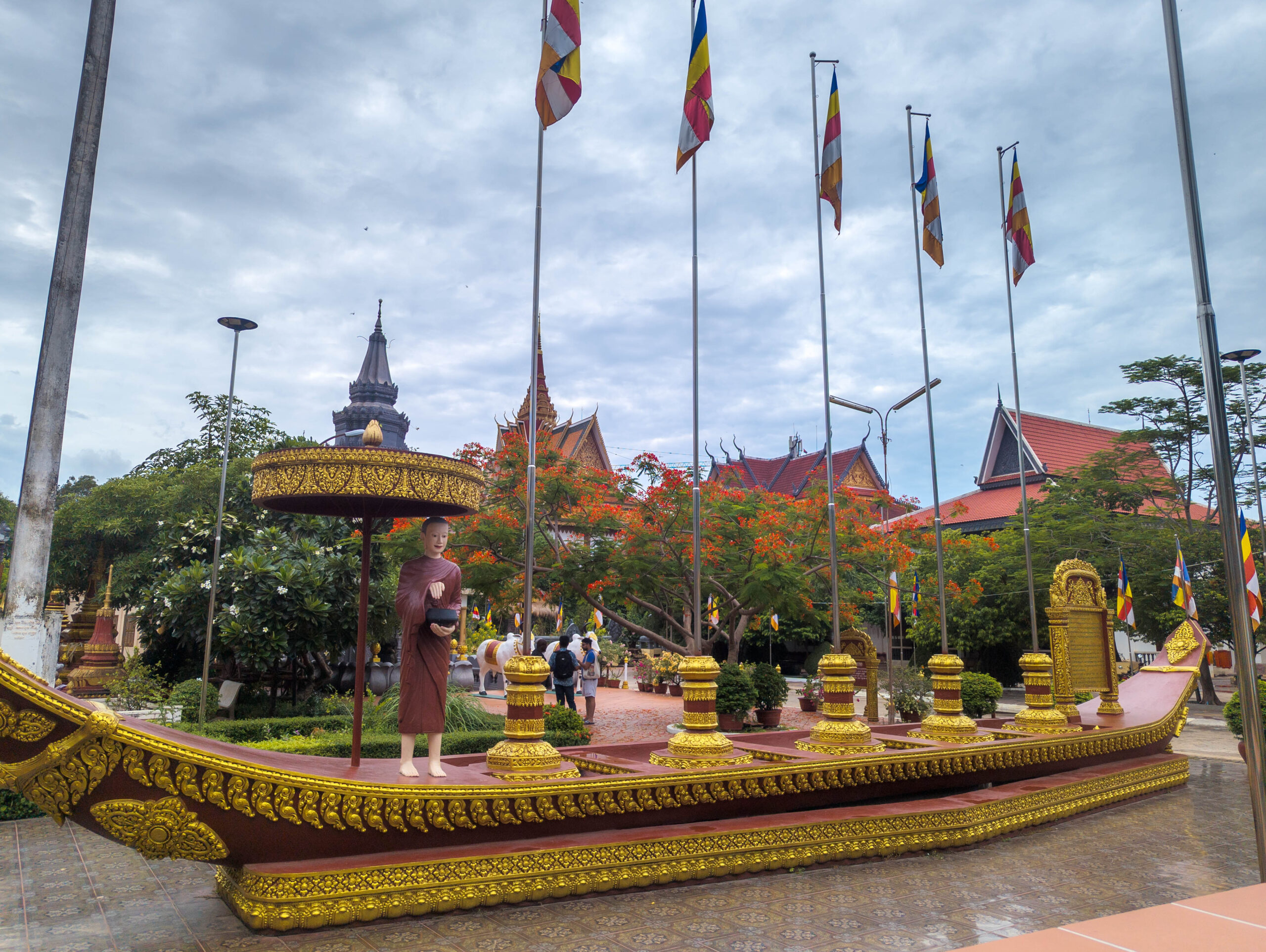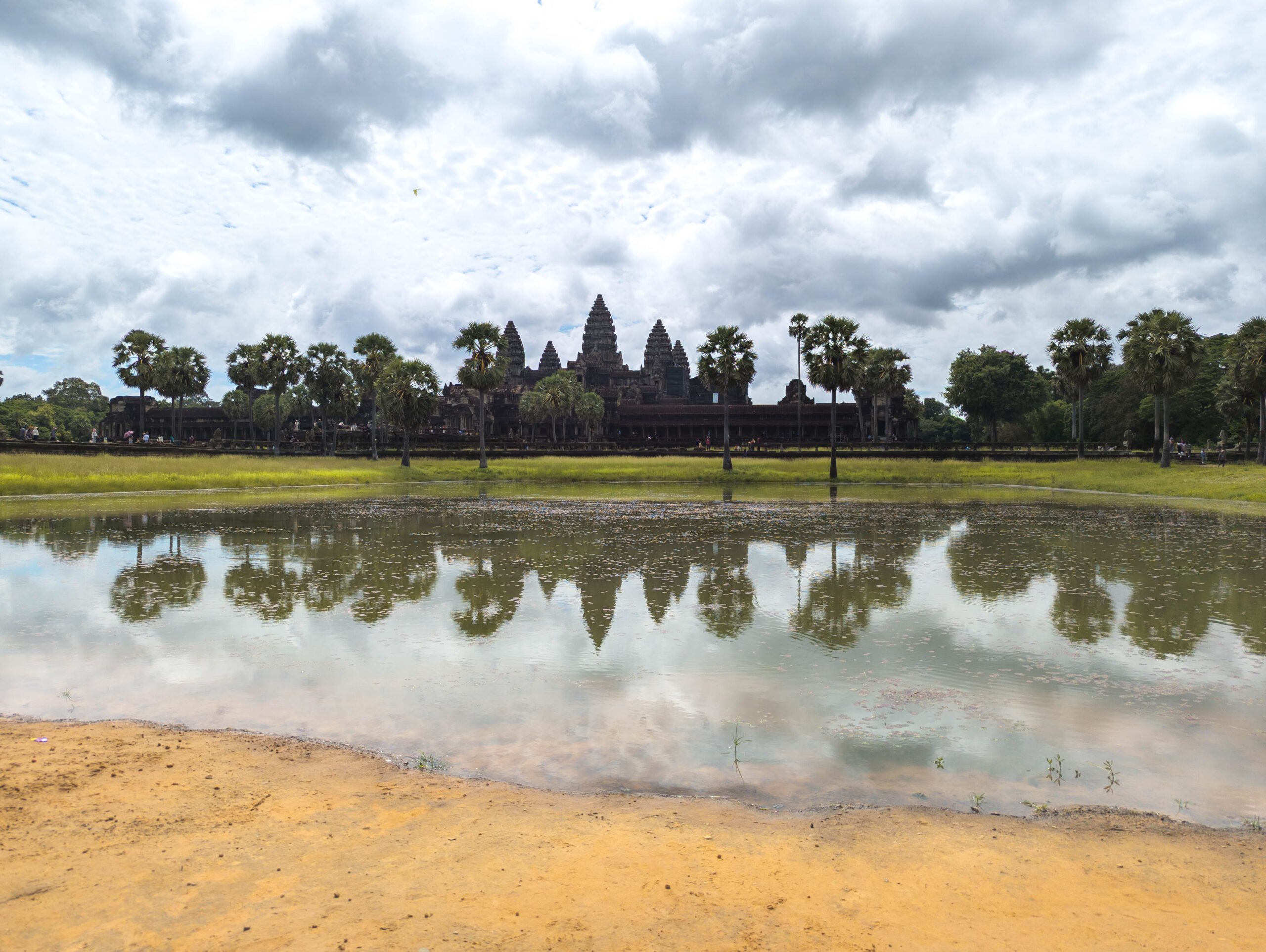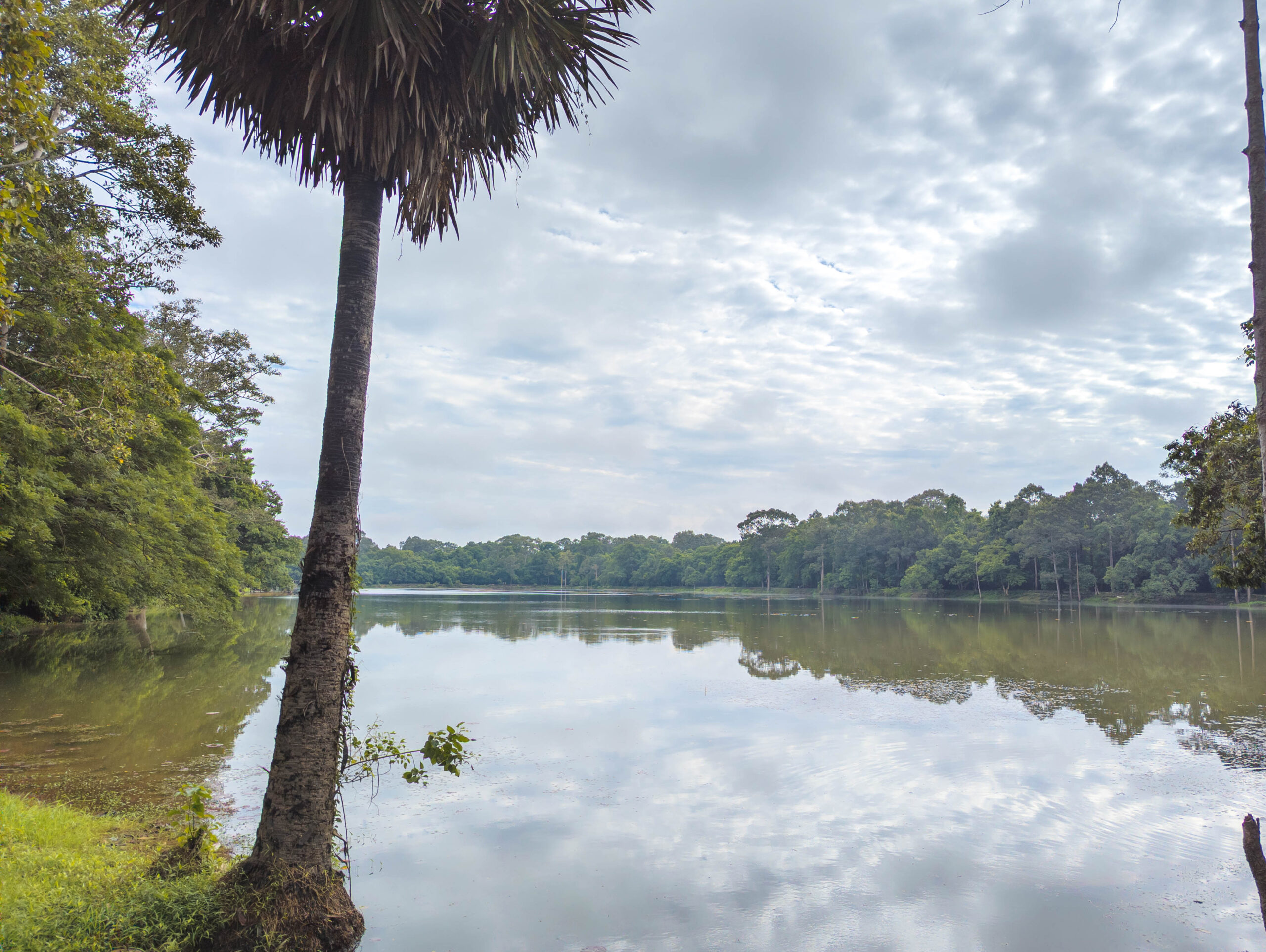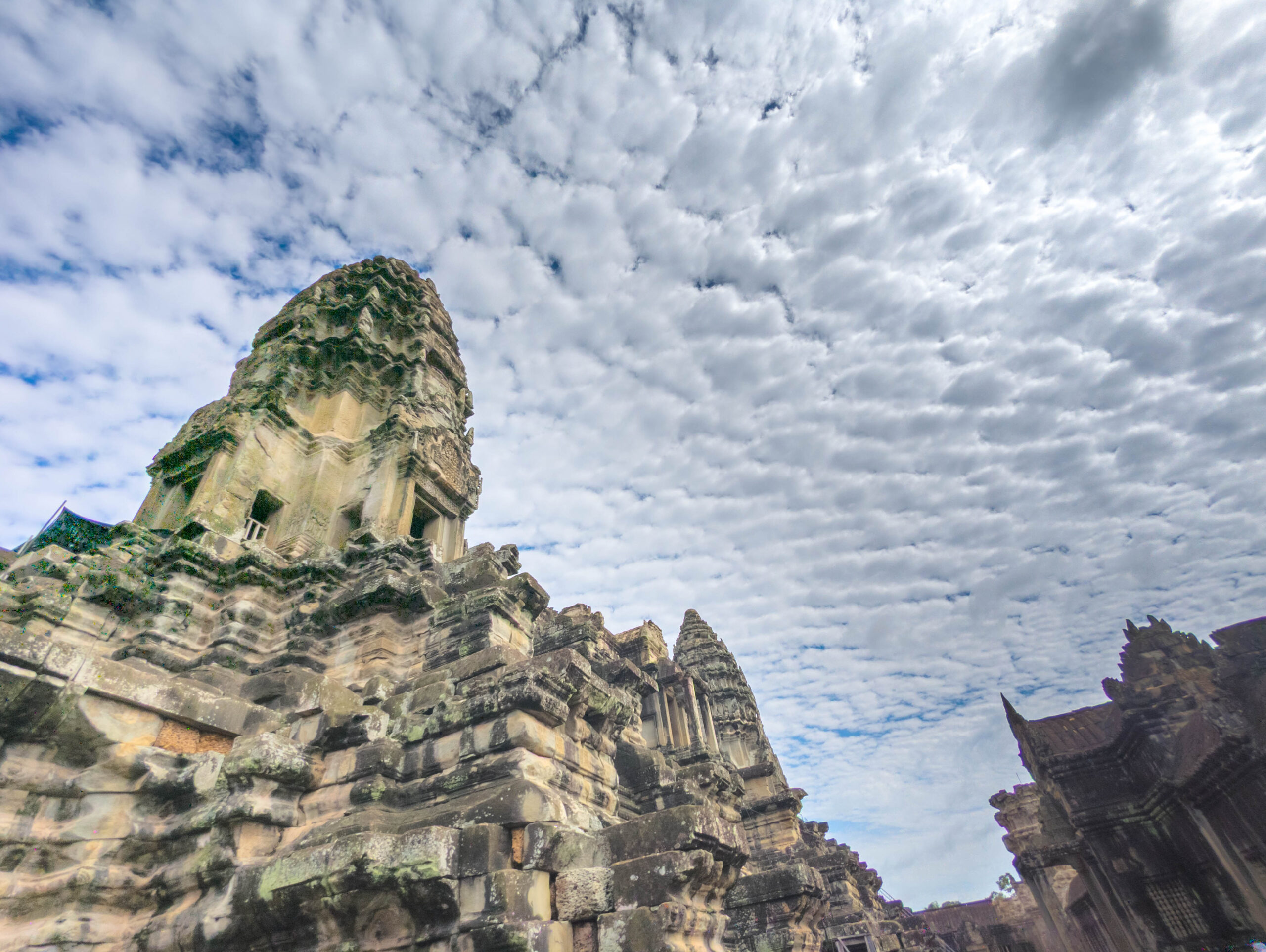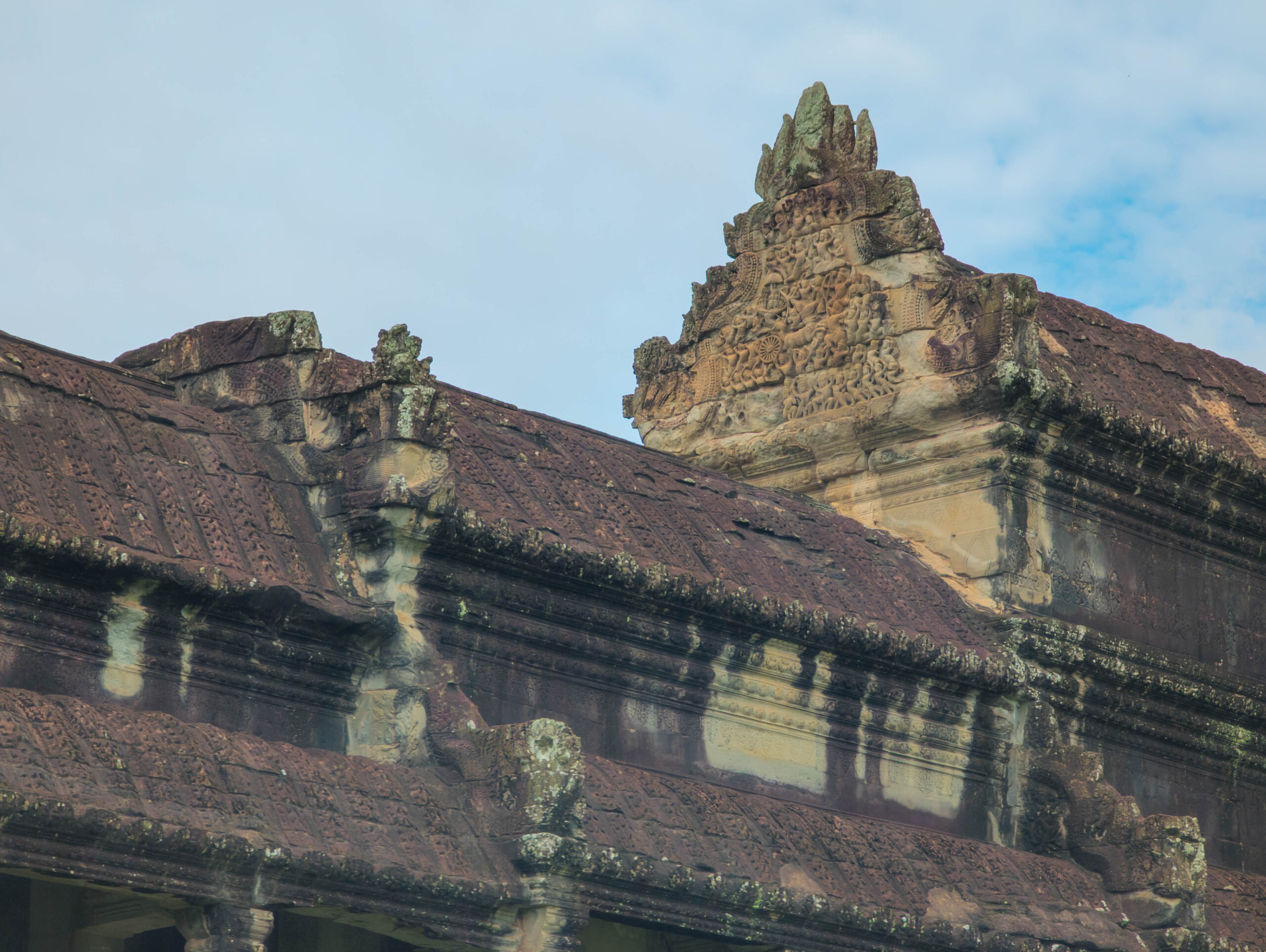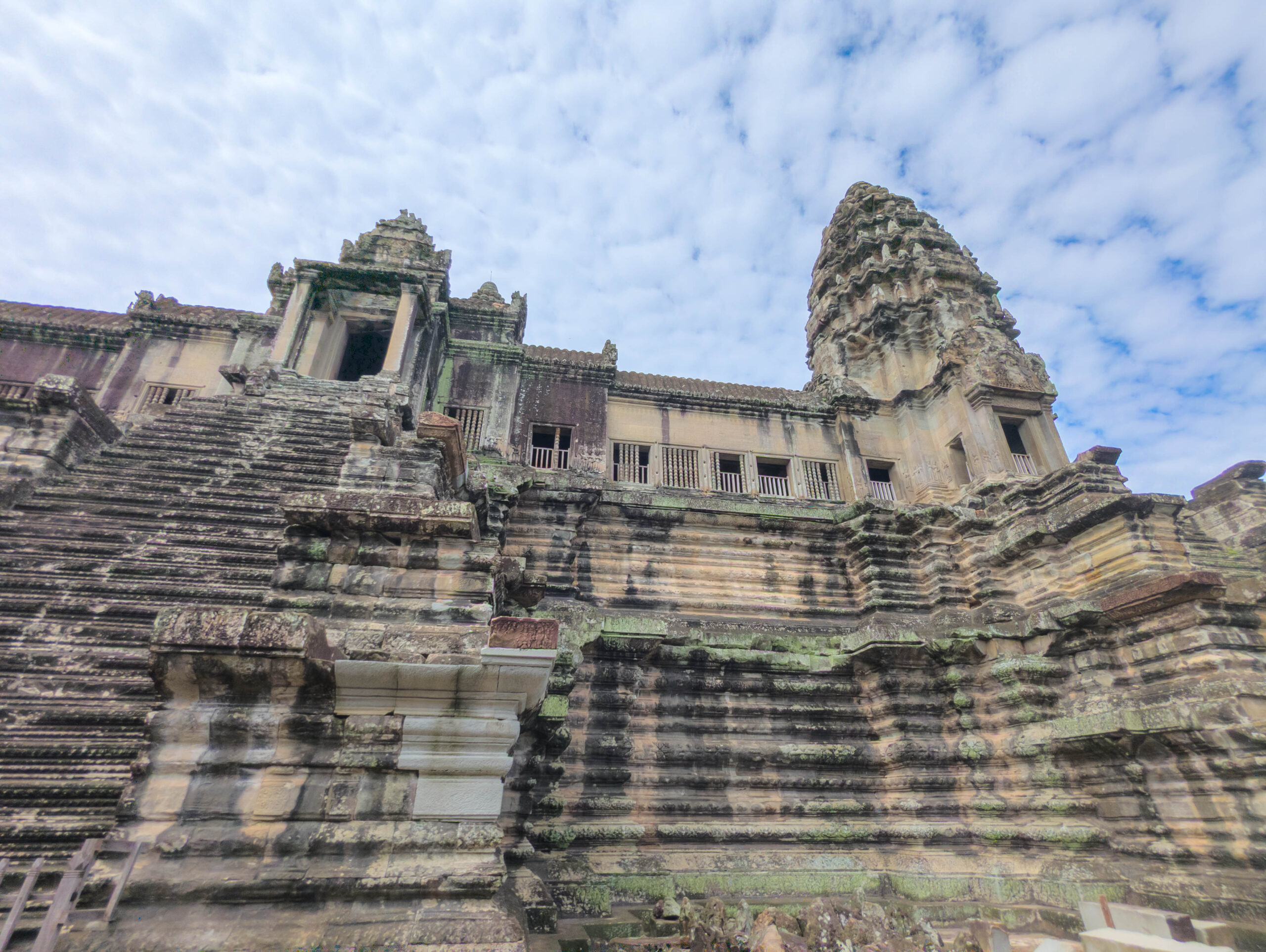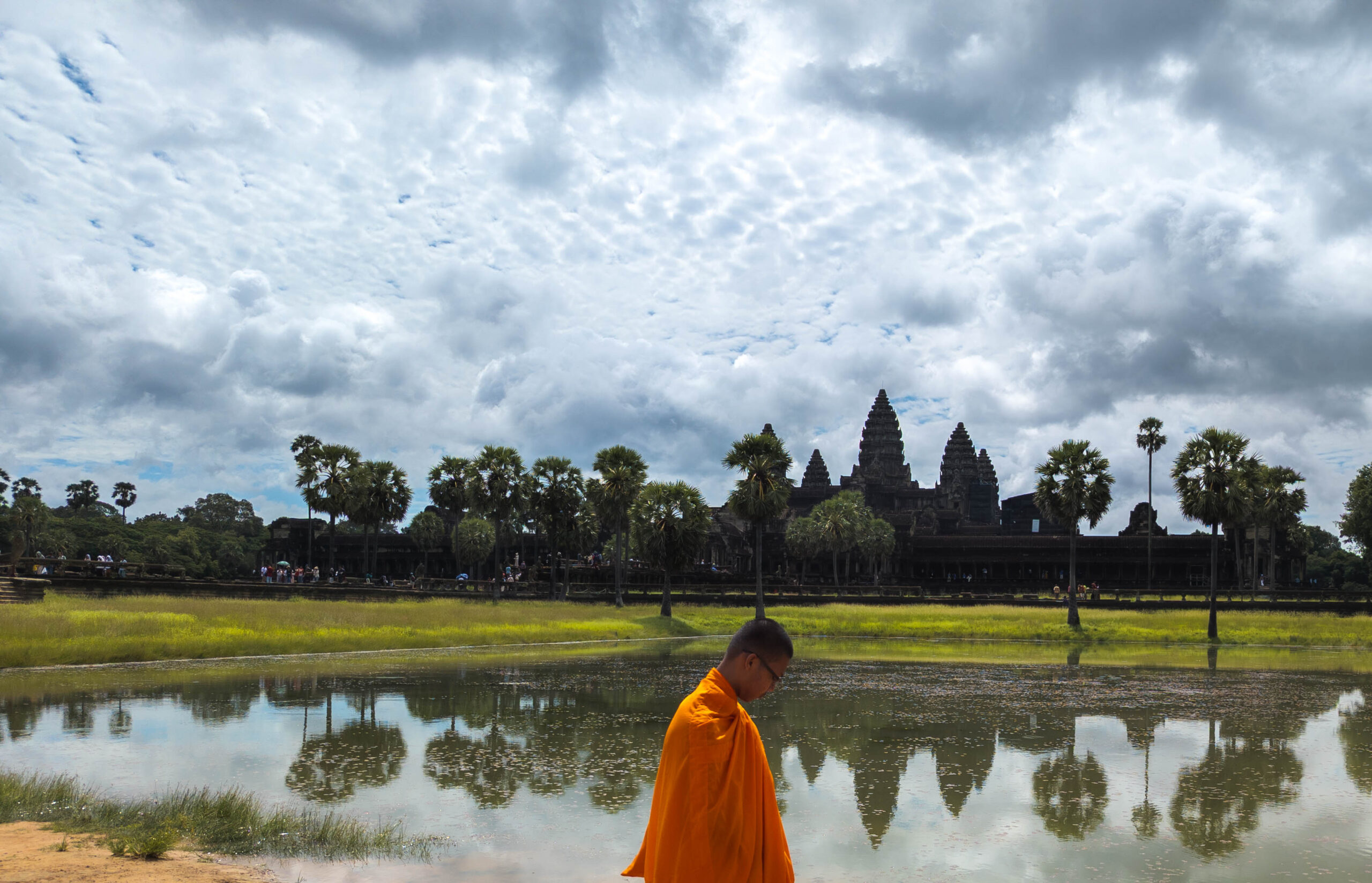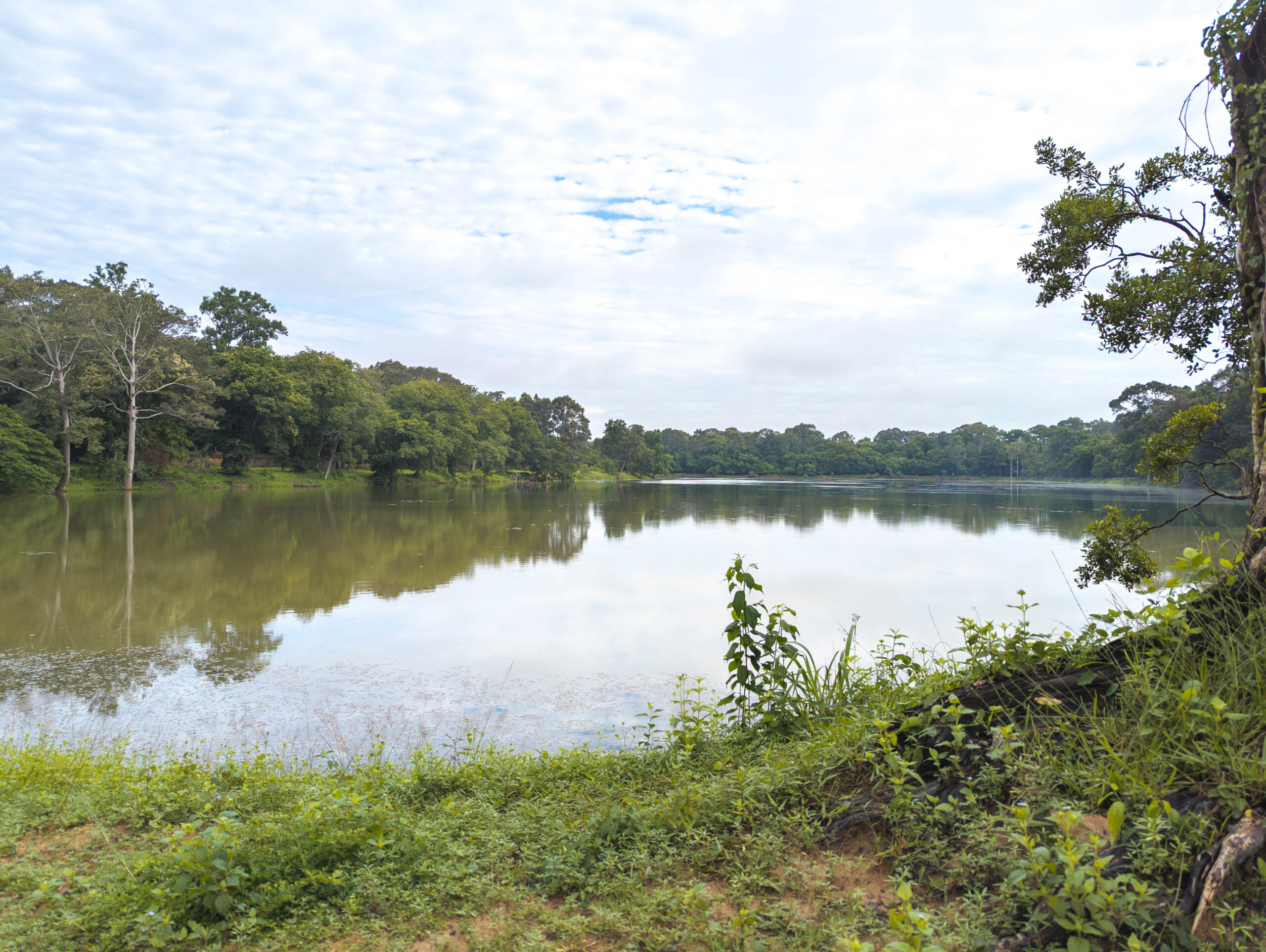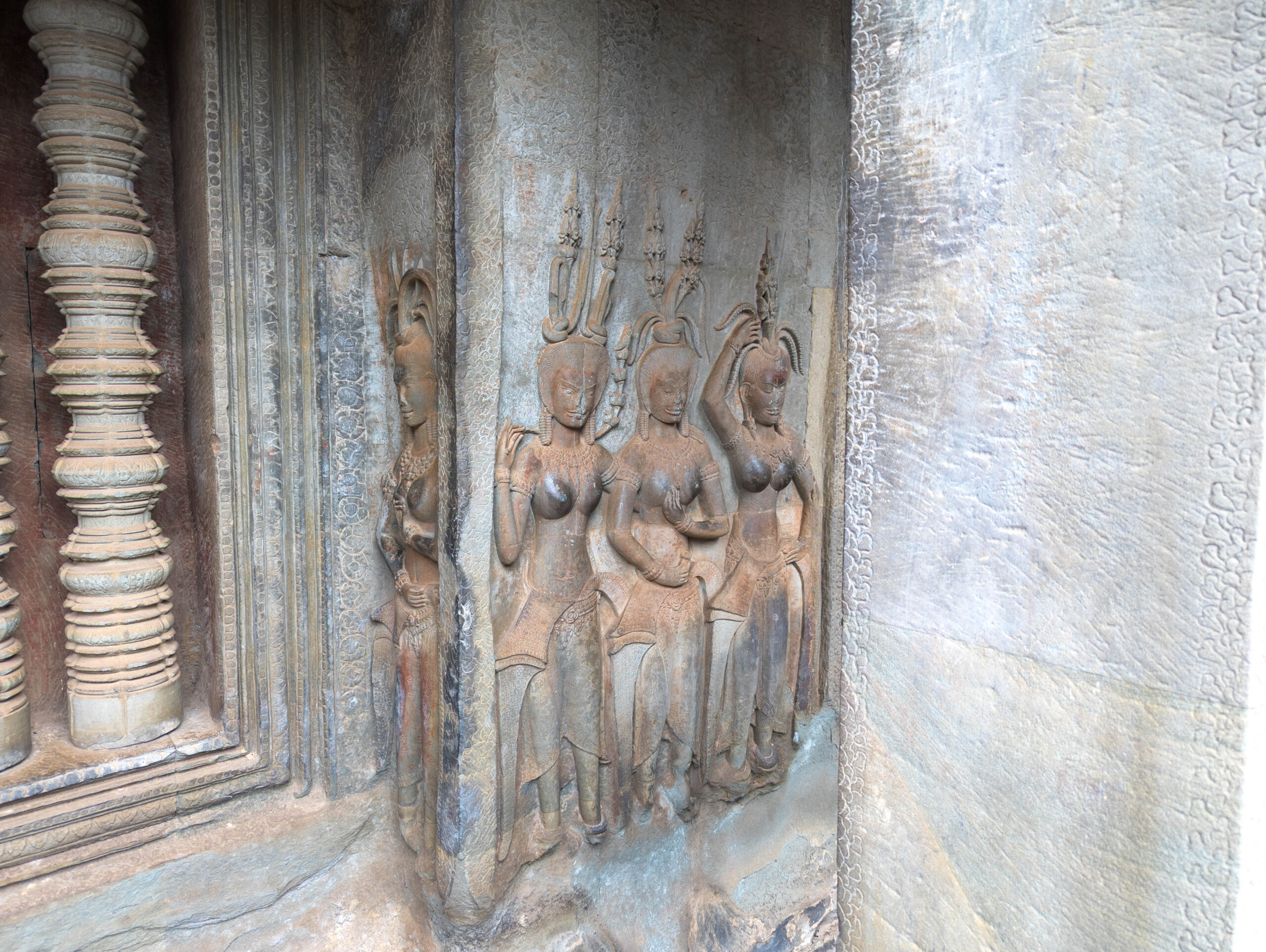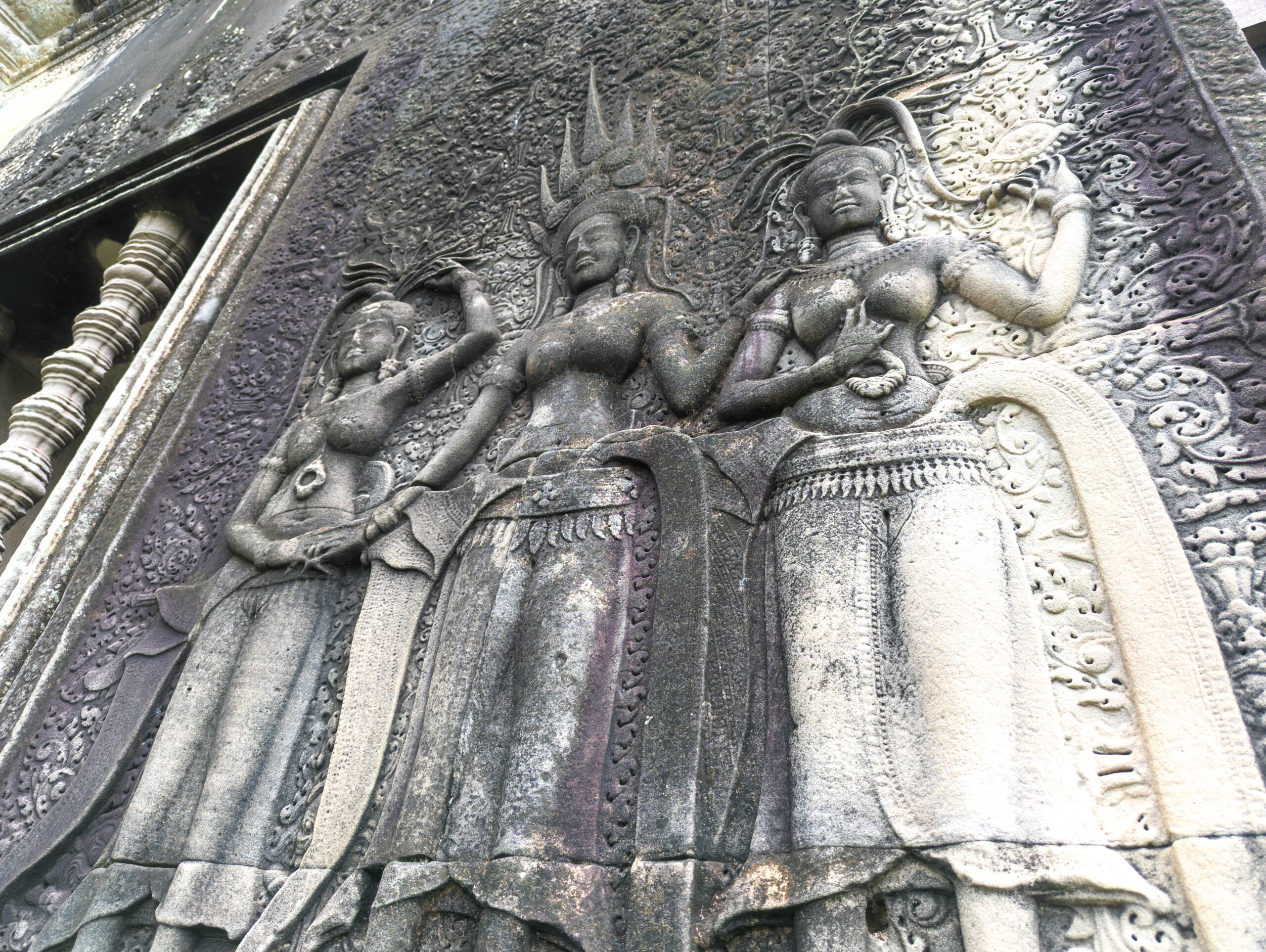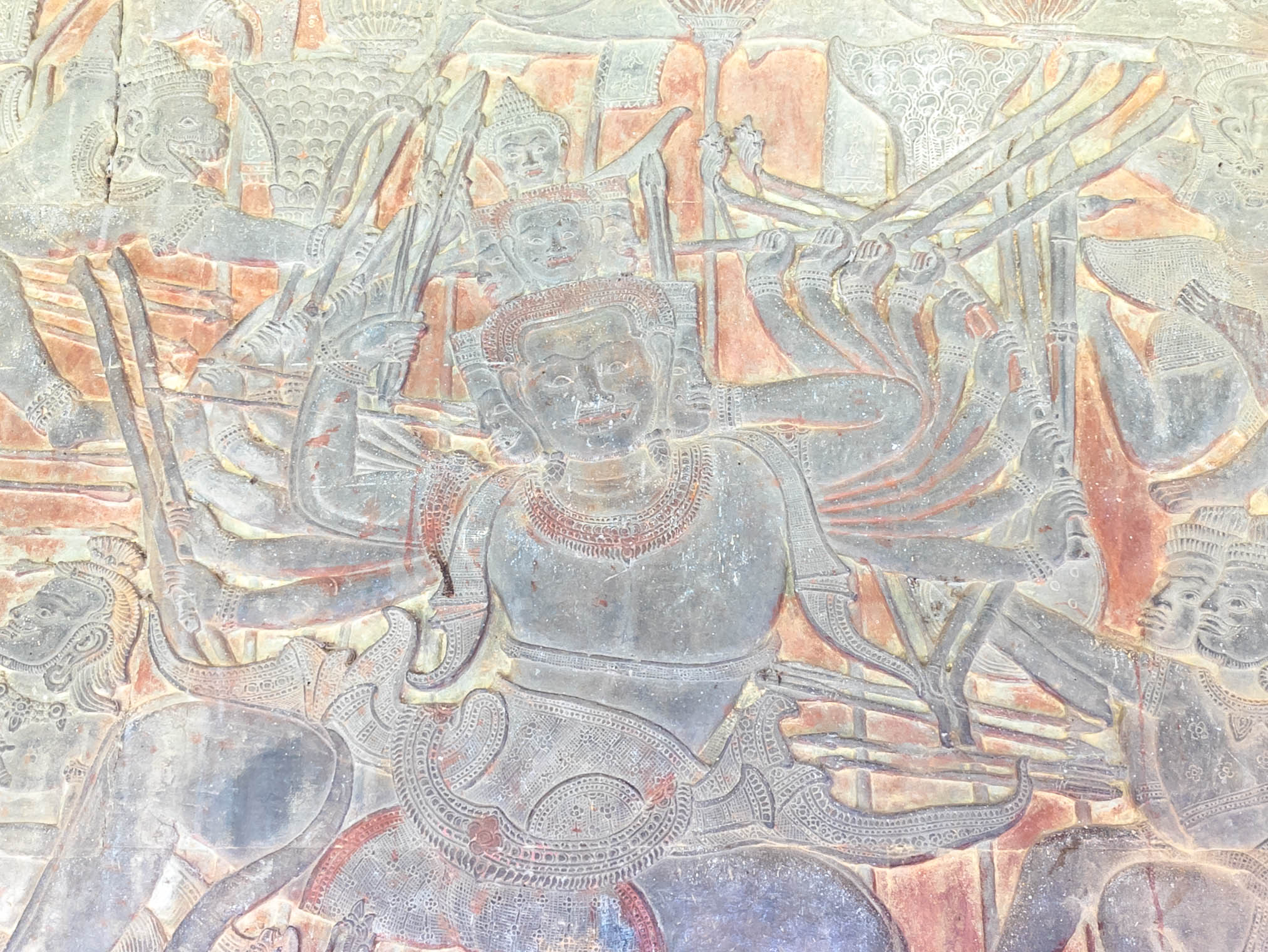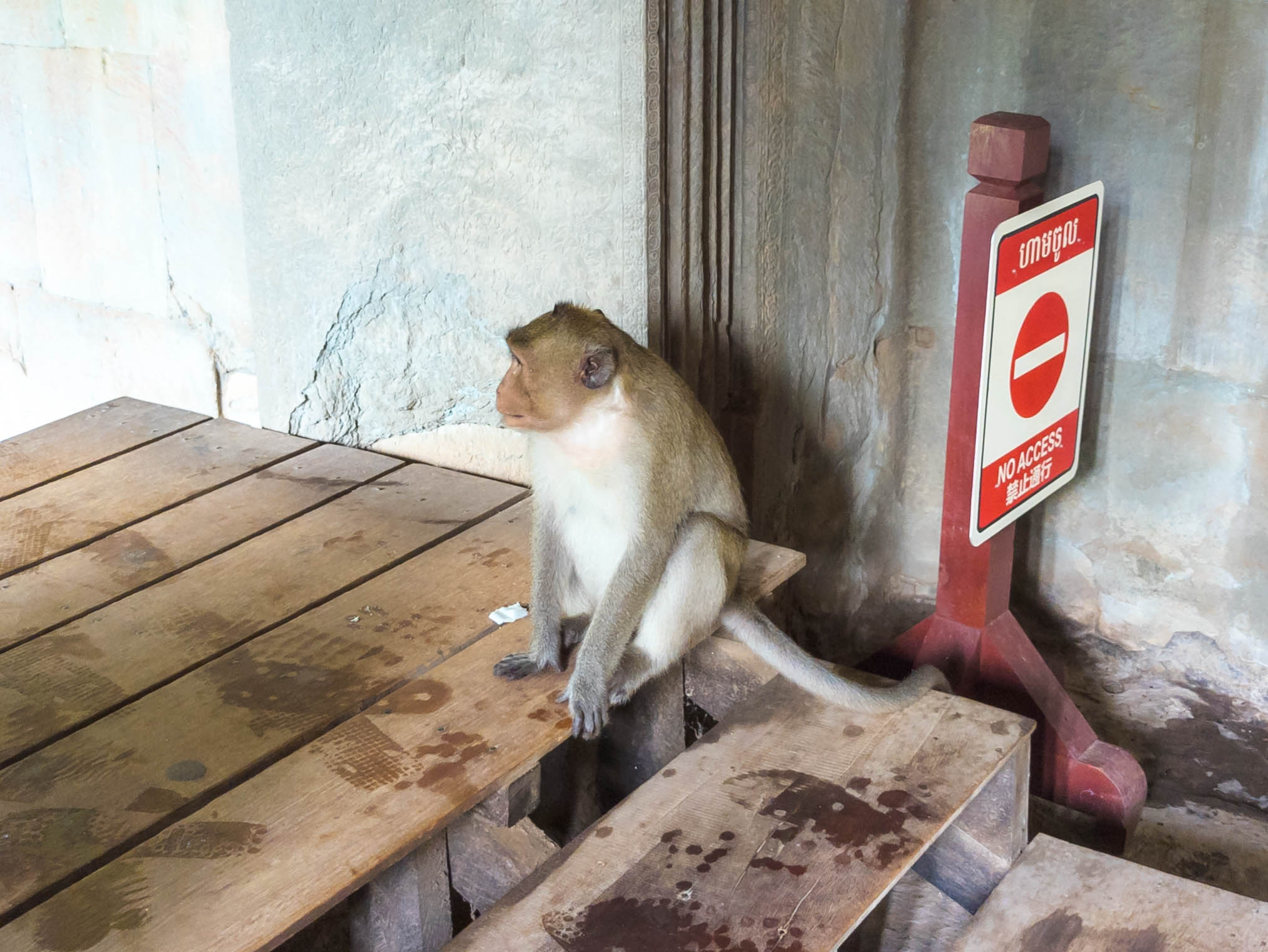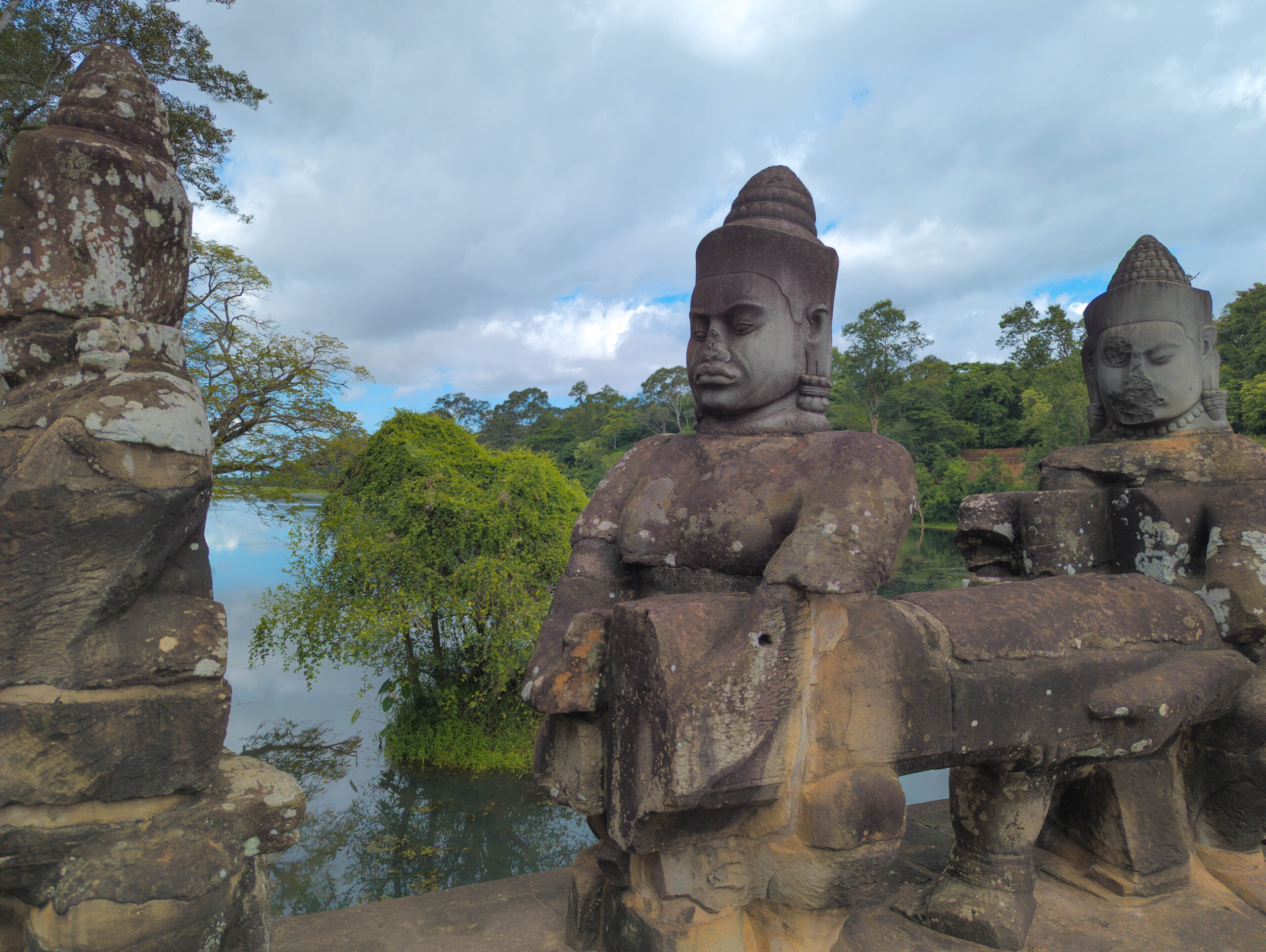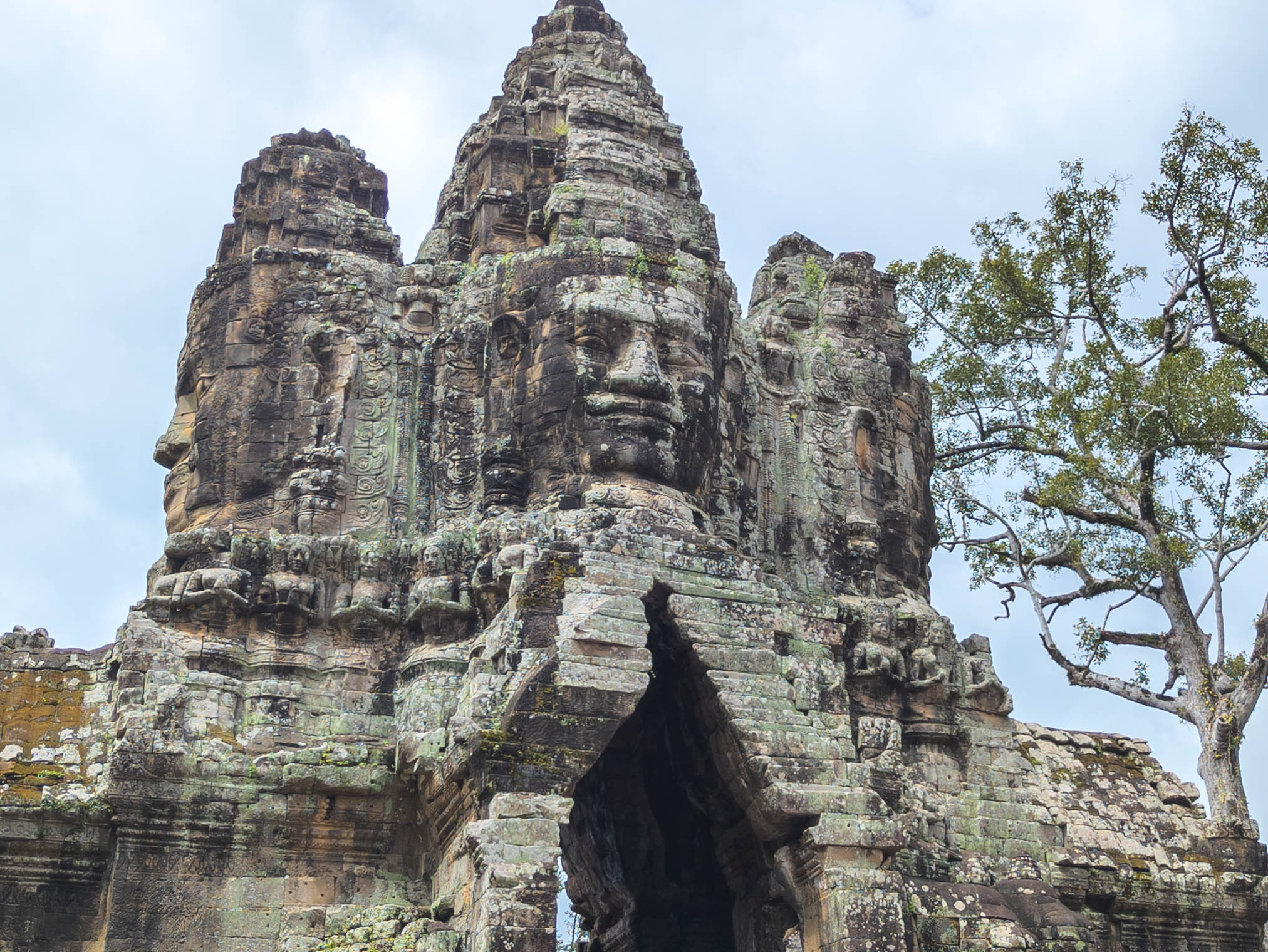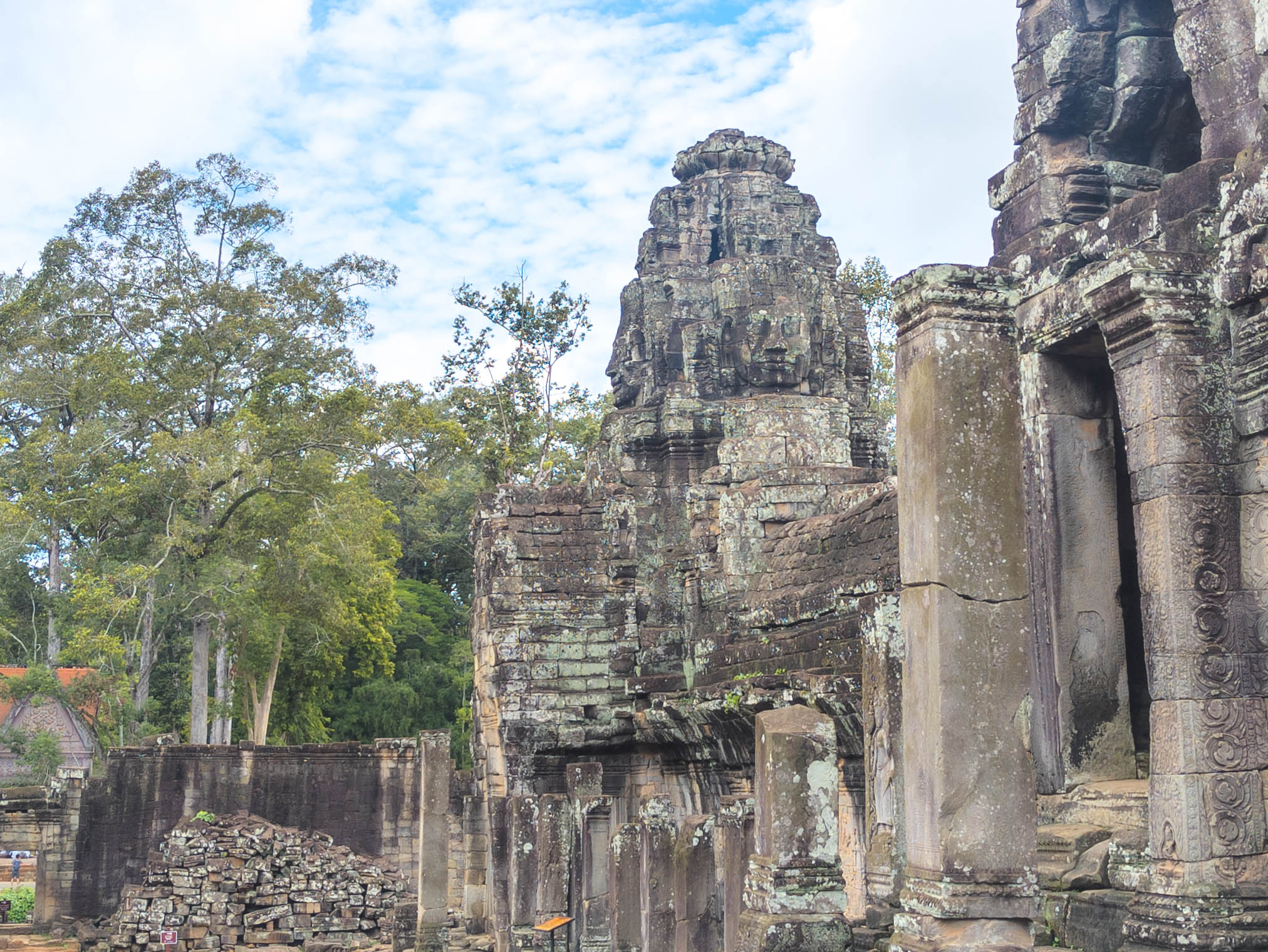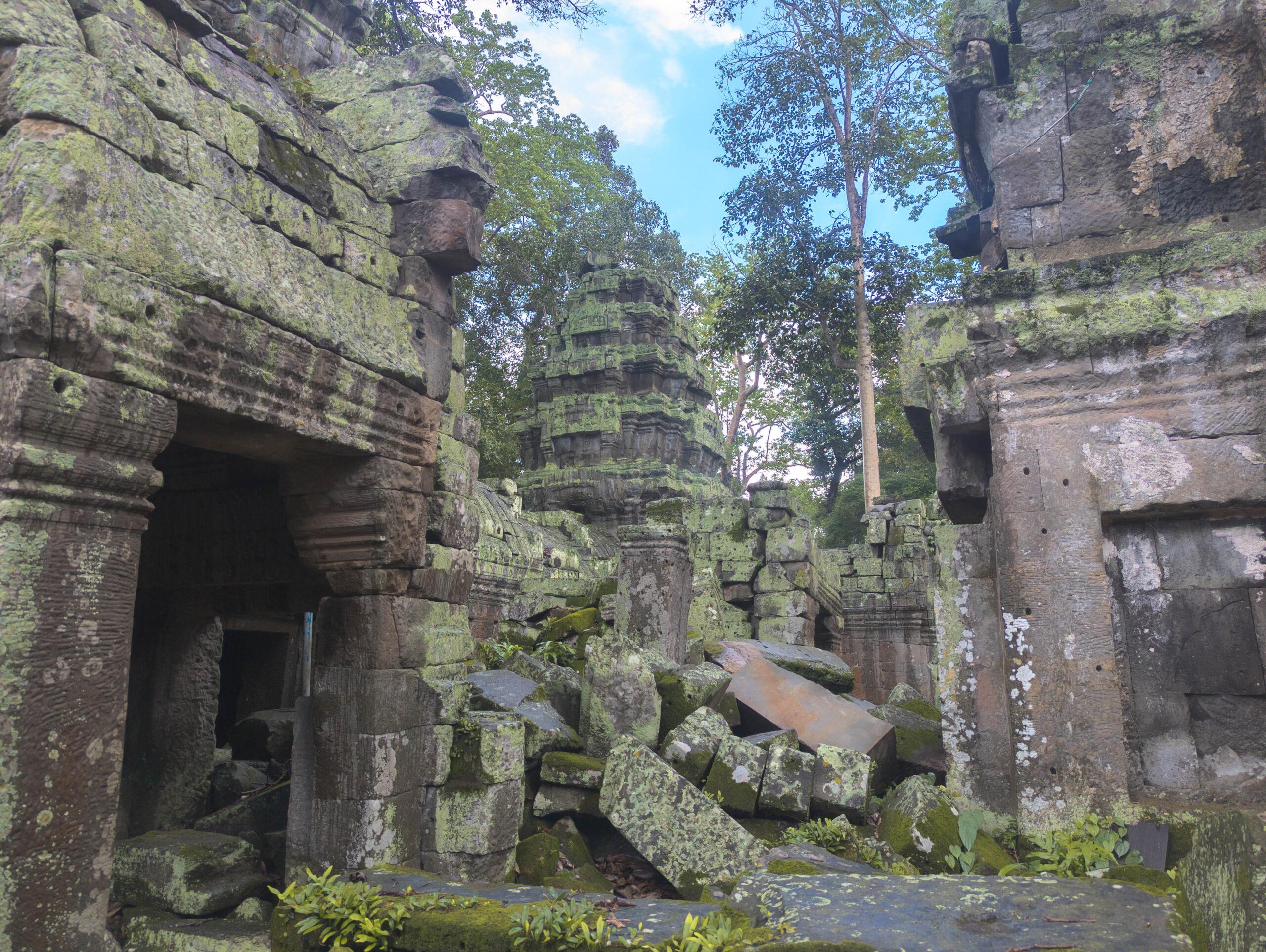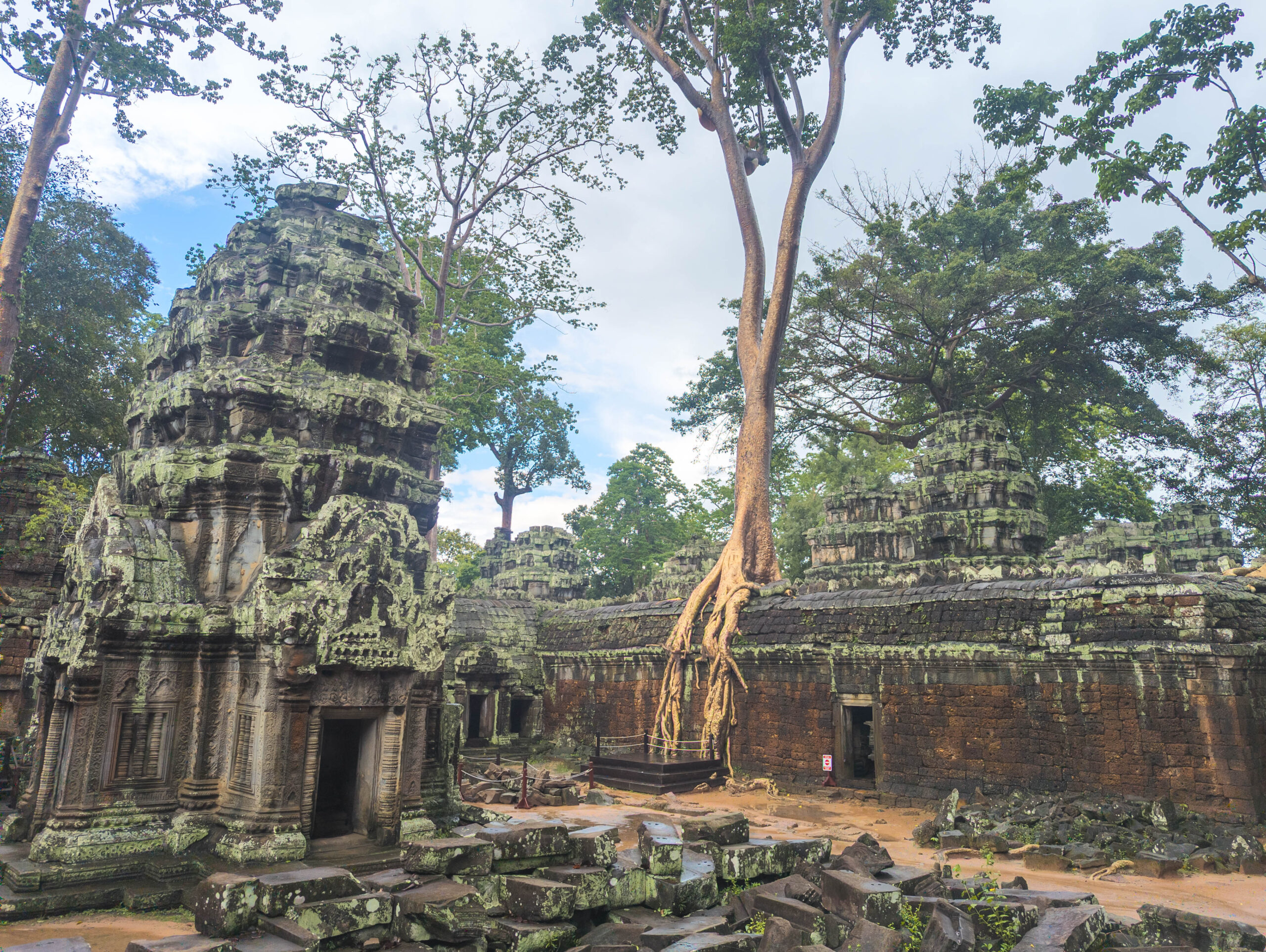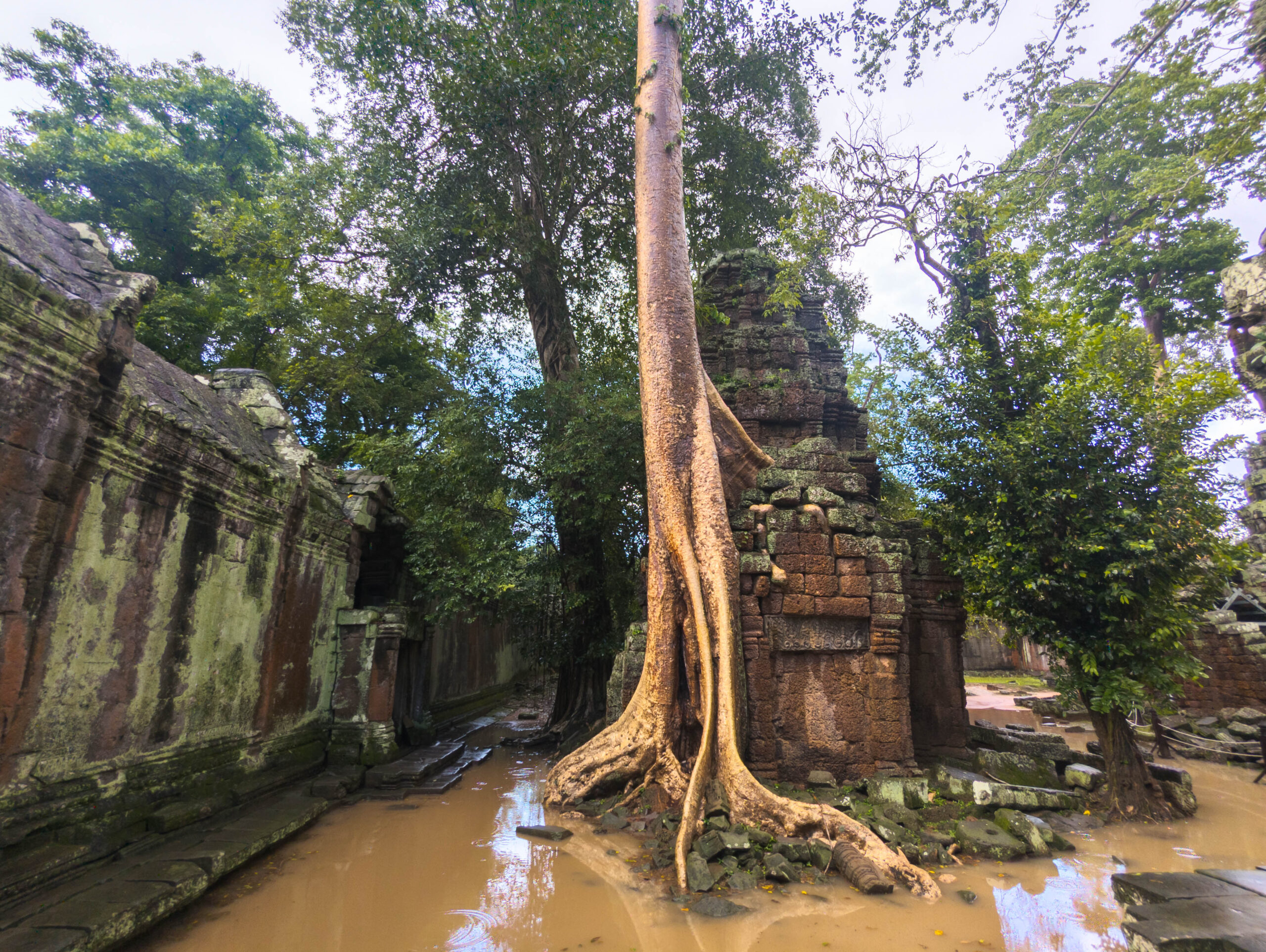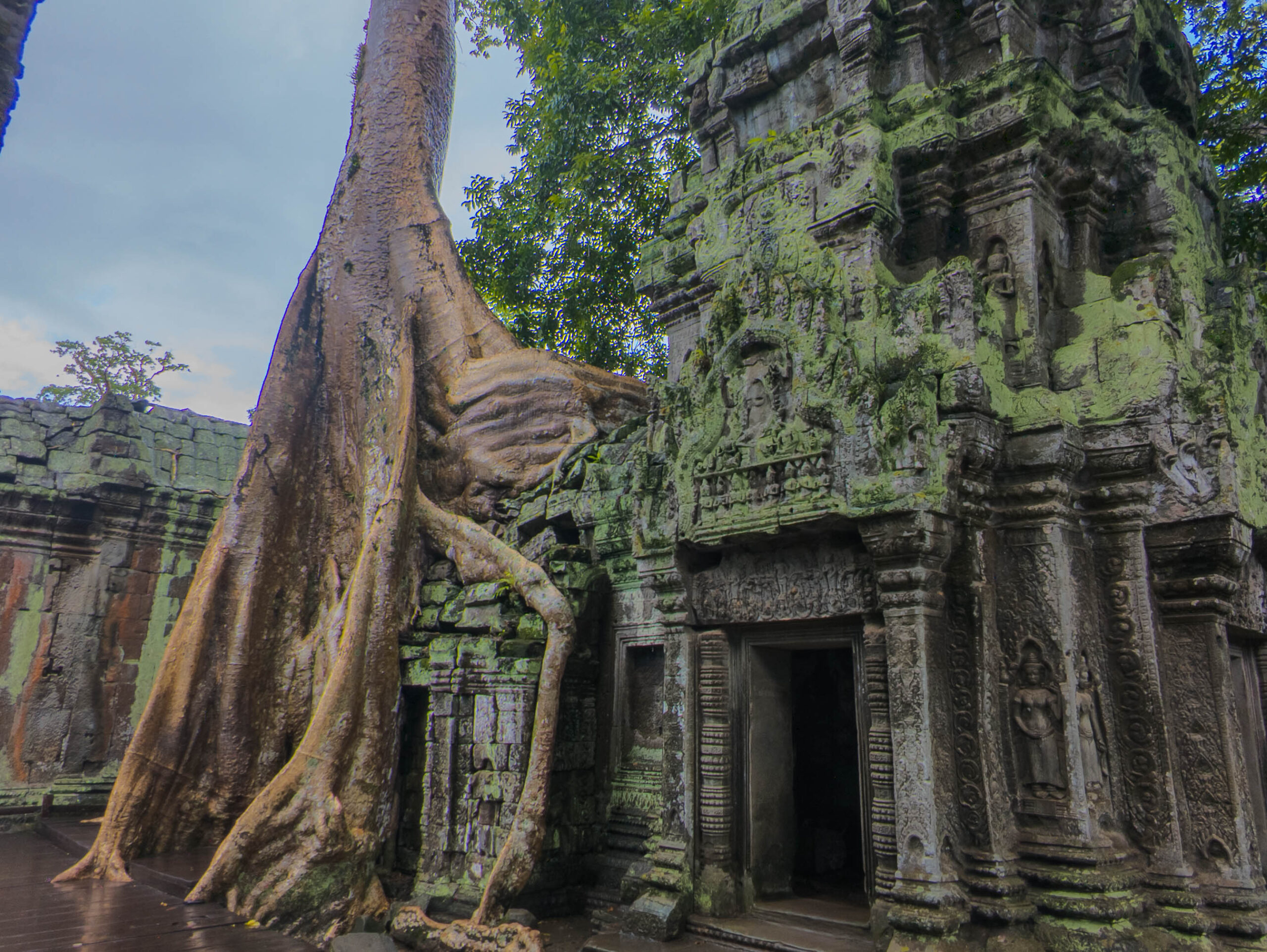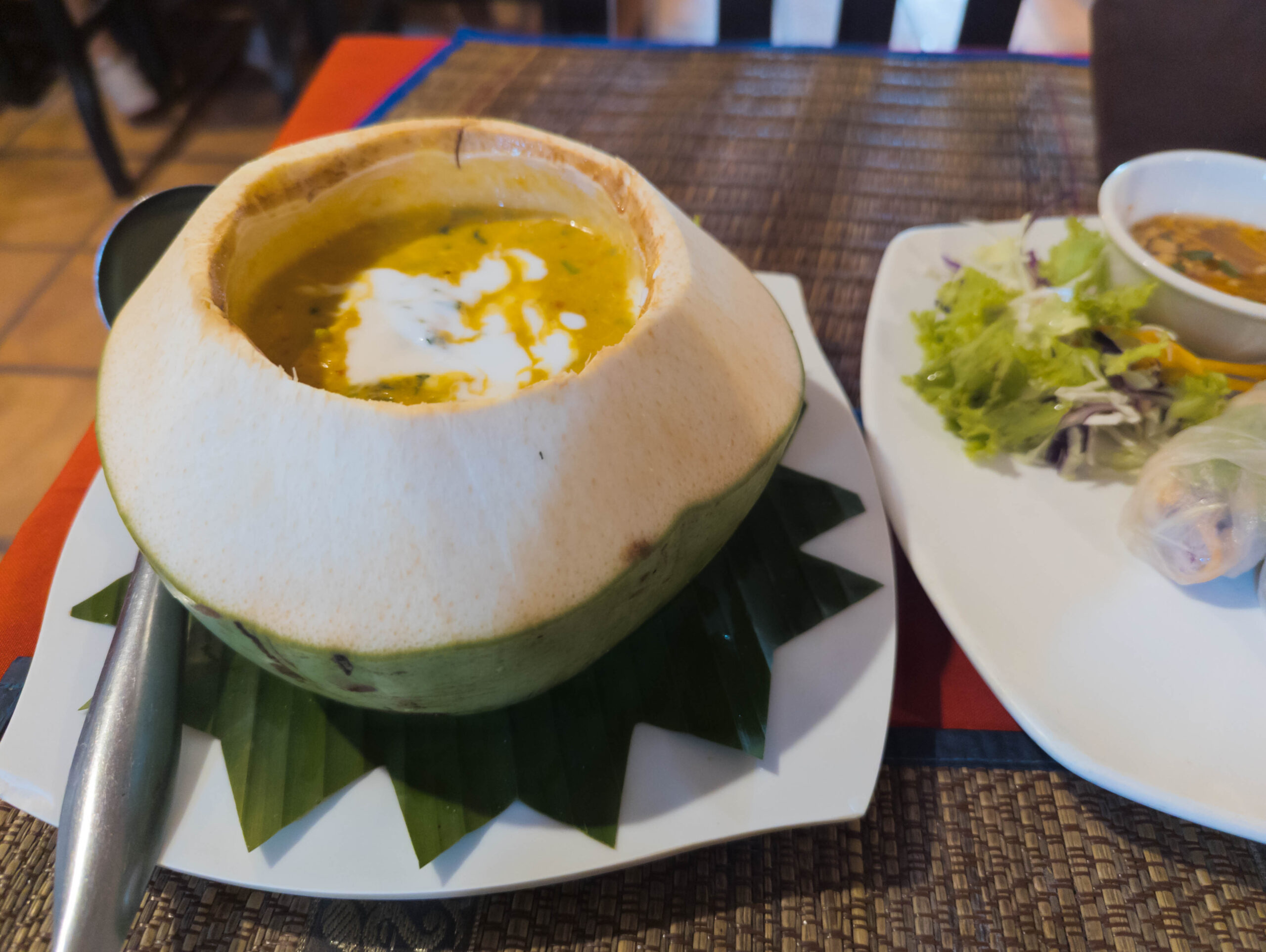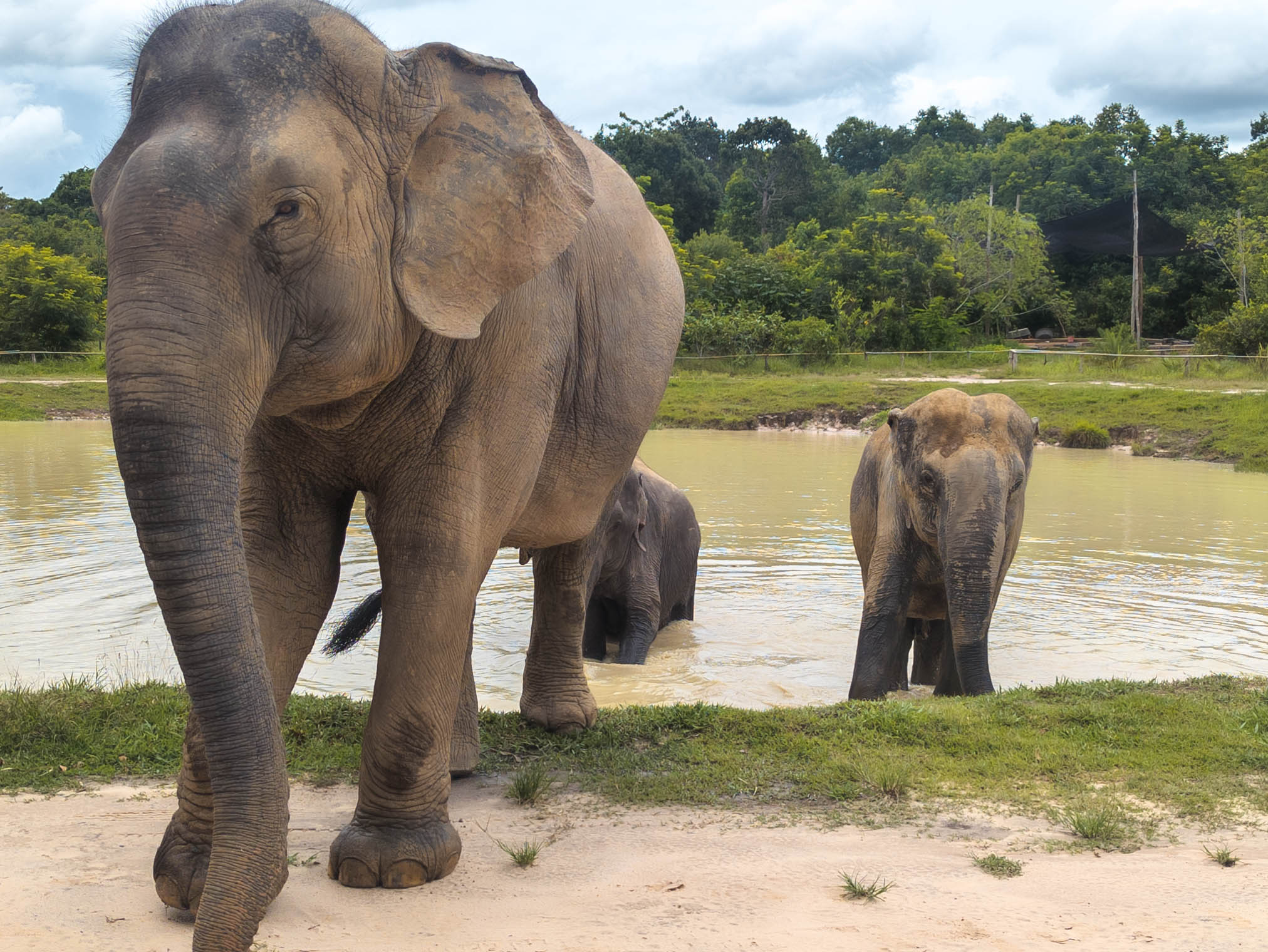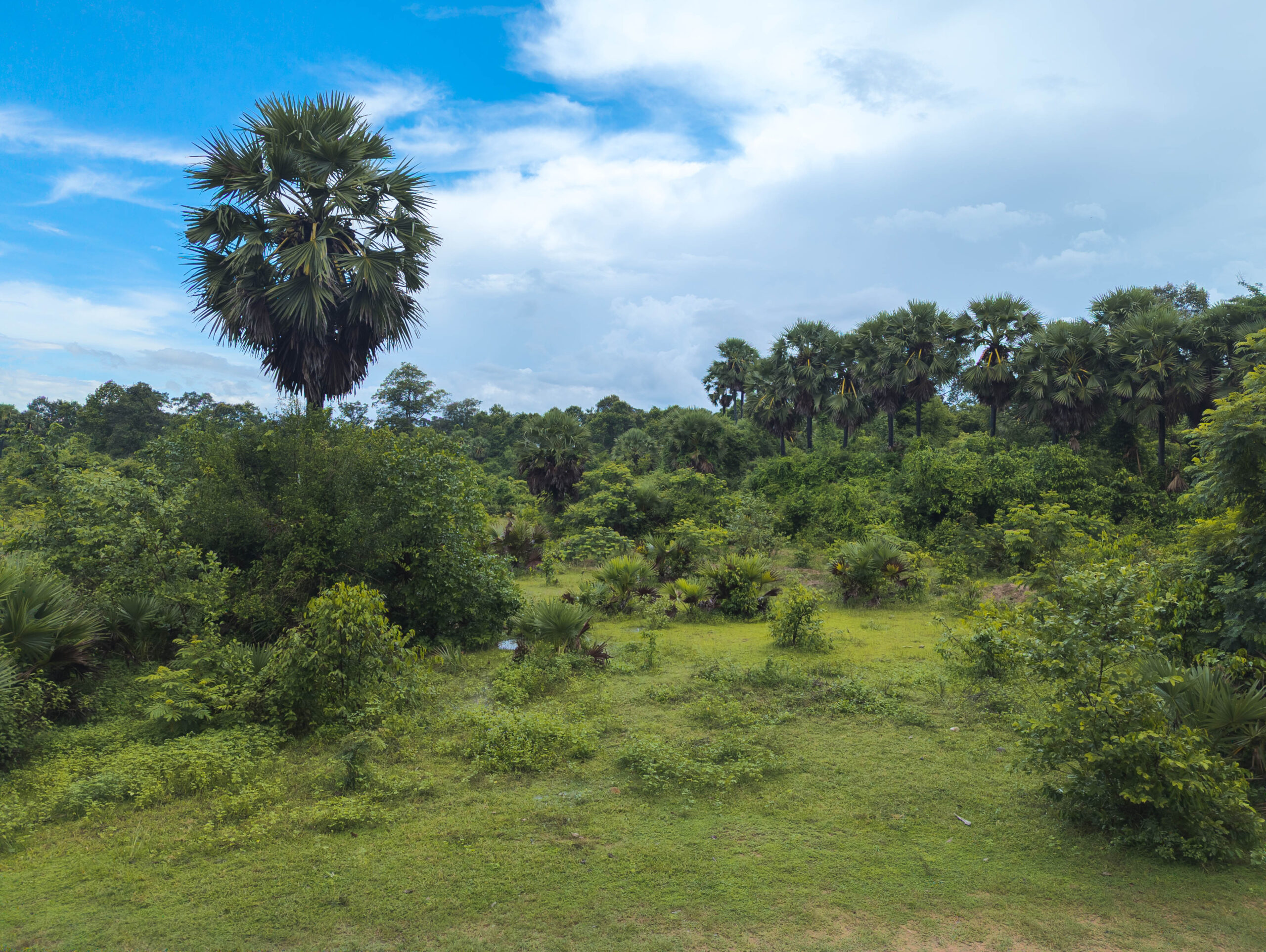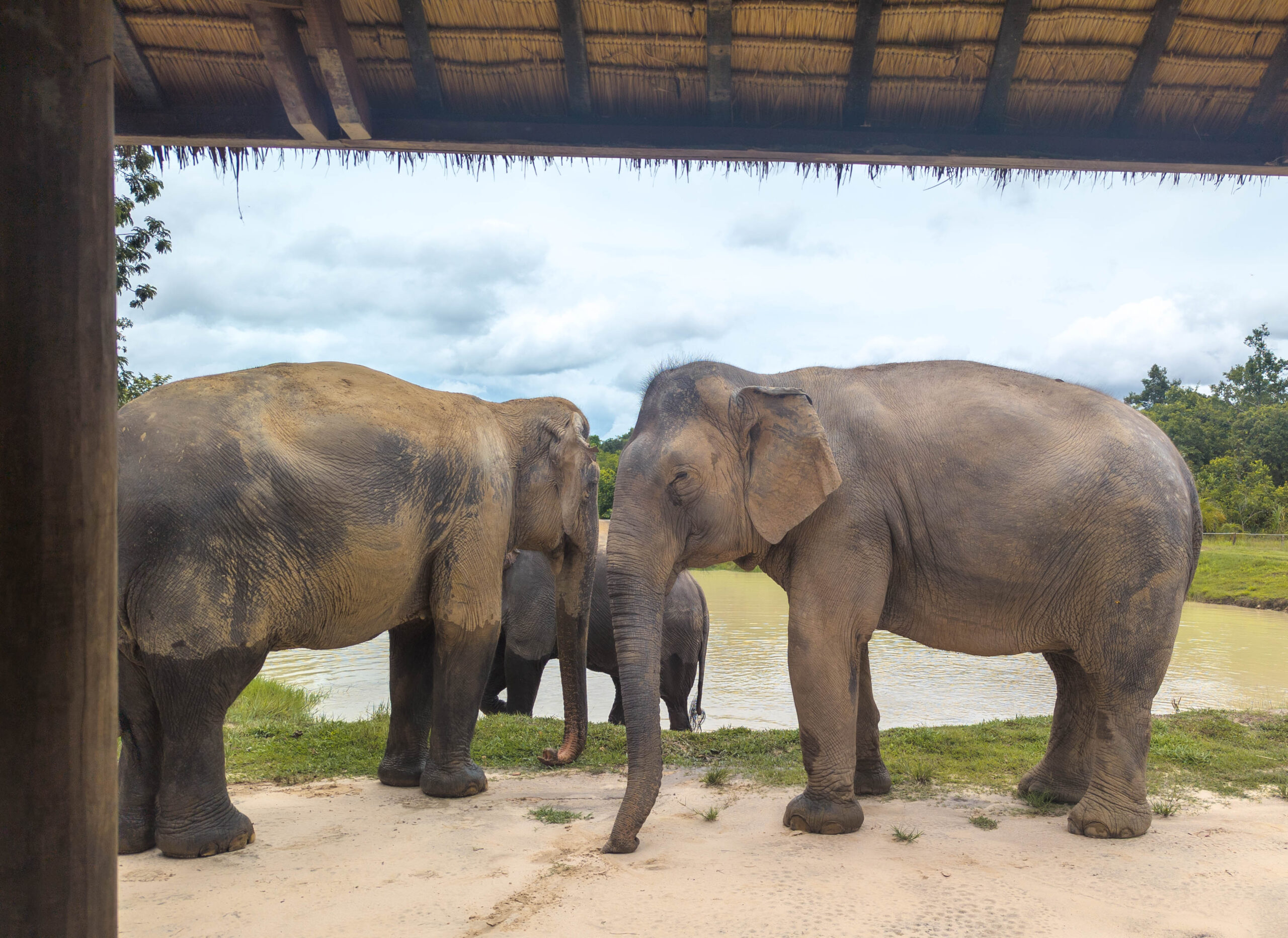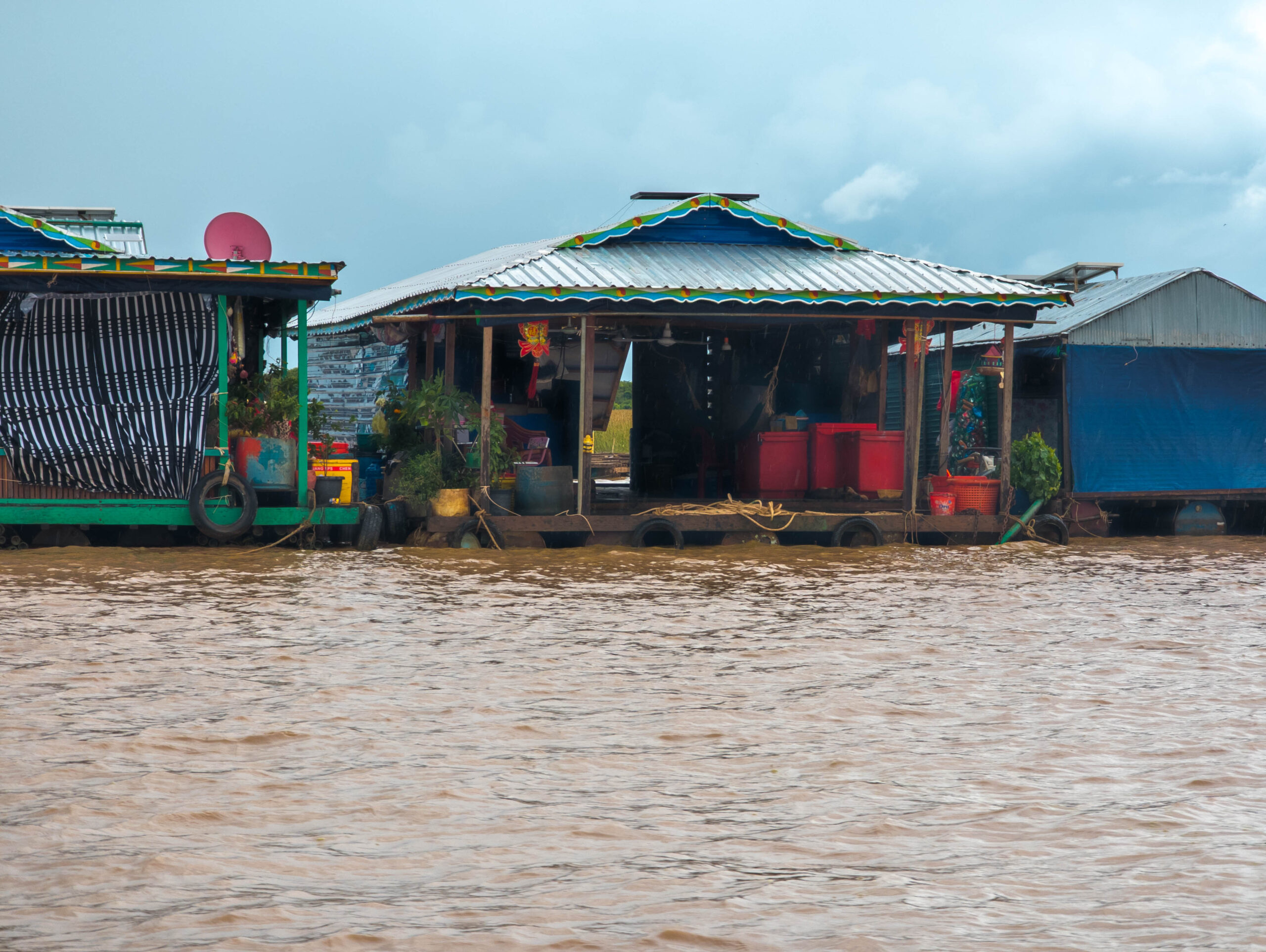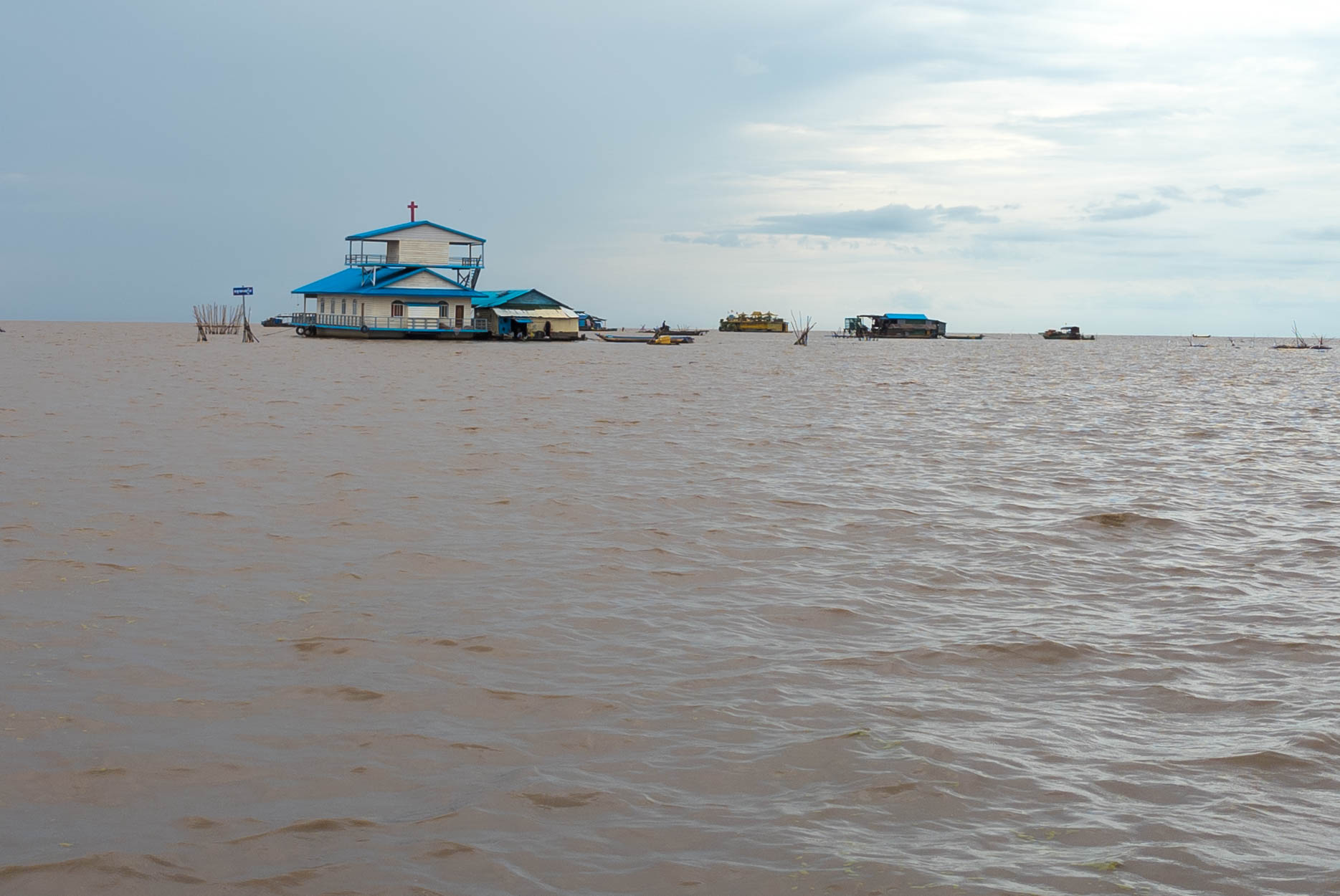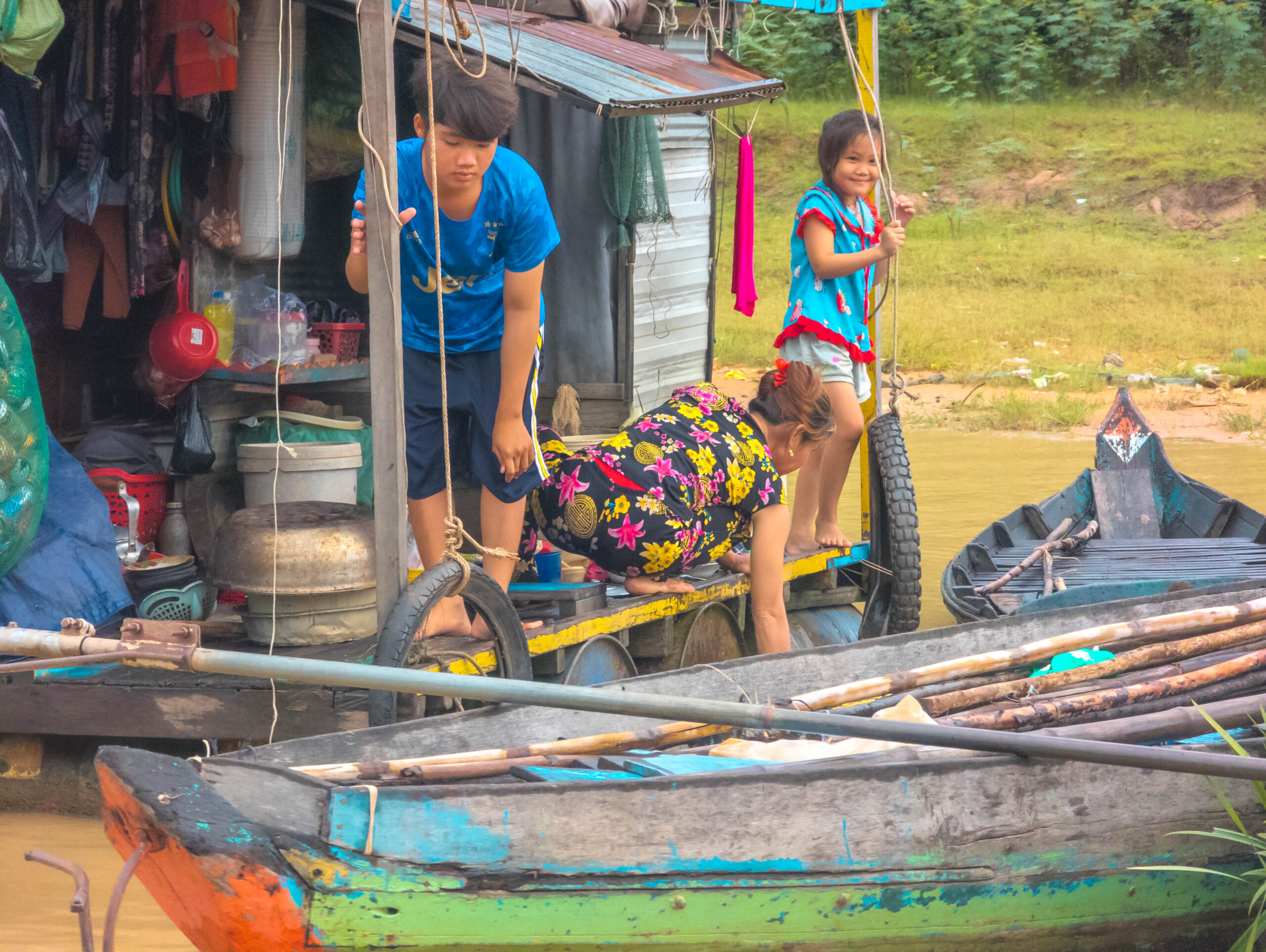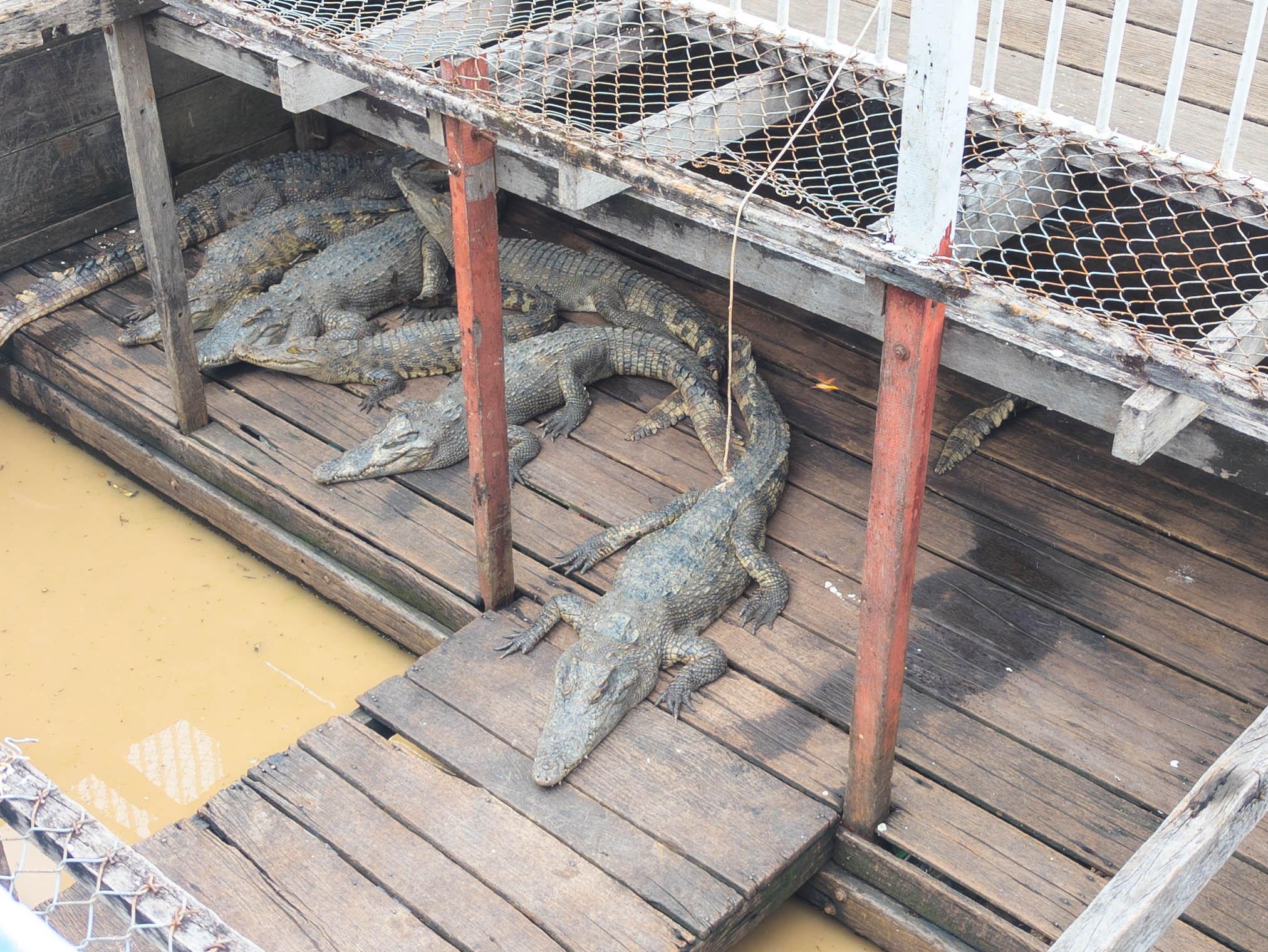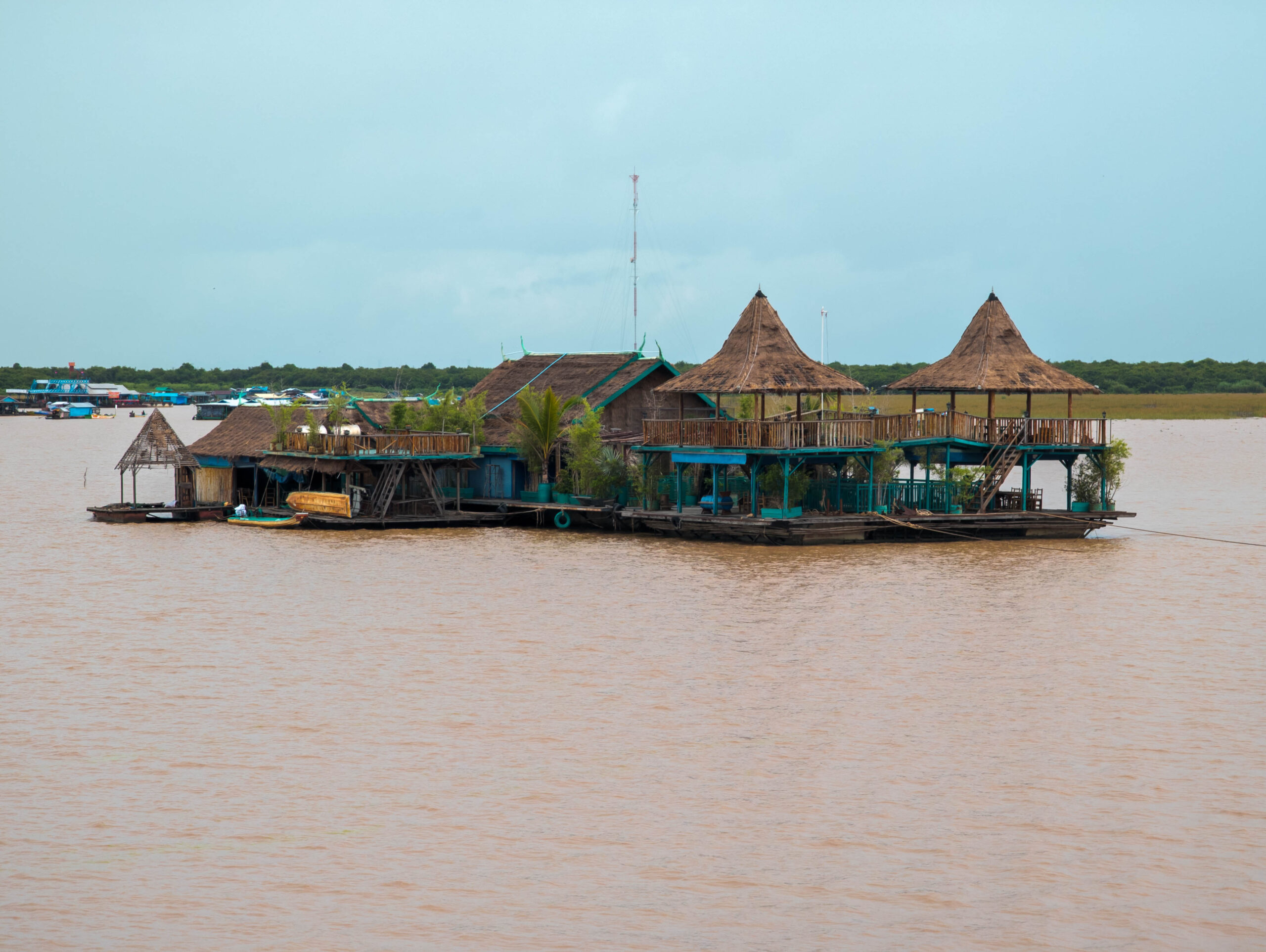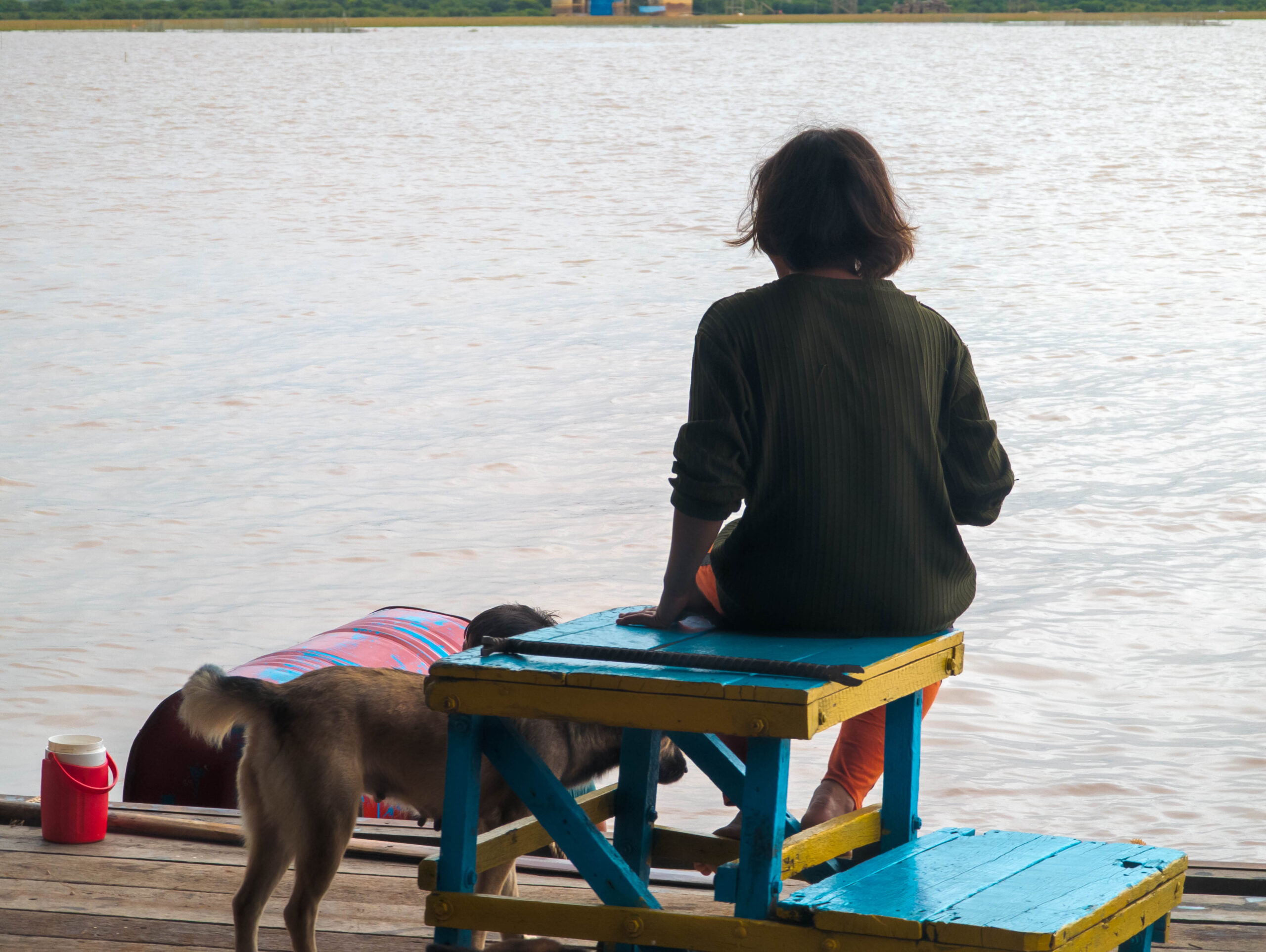Cambodia
June, 2023Elephant Stones
June, 2023
I should have known that China would have one last laugh at my expense.
Preparing to leave my 18-month posting to Xi’an, I had planned to travel south to Yunnan Province and hike Tiger Leaping Gorge, before taking the short flight from Kunming to Siem Reap.
A few days before, though, the Kunming flight was abruptly cancelled. No alternatives. So instead I had to go haring around the country, back to the capital, and spend most of the day wandering around the airport and using up the remaining WeChat balance on the vending machines.
So, instead of snapshots of snowy peaks and majestic gorges as my final Chinese memories, I was treated to an extended tour of Beijing Airport. If there’s one mantra for a laowai, I’ve learned, it’s to always expect the unexpected.
A late-night arrival into Bangkok and I was suddenly back in the rest of the world, where VPNs are no longer needed.
One more flight and, finally, I arrived in Cambodia. Siem Reap Airport to be specific.
There were a couple of inspirations behind the desire to come here. The Fall of Civilizations podcast had done another excellent episode on the Khmer Empire, and there isn’t a single place they discuss on that magical, hypnotic project that you wouldn’t want to visit, having learned about it from them. And Angkor Wat was one of the Wonders of the World you could build in Civilization IV. Any location that finds itself at the intersection of these two great influences is surely worth the journey.
My first impressions were good. It was a small, neat airport with unusual but calming wooden panelling. I was greeted enthusiastically by the border guard: making a change from the usual scowls or bored stares one gets accustomed to.
Siem Reap is not a big place, and I was soon at the hotel, which far exceeded expectations: superb shower room, great aircon and clean, comfortable bed: all very welcome after the faff of getting here. Like everyone else so far, the staff were exceptionally nice. The towels had been folded into the shape of elephants, which was a nice little touch.
The following day it was time to explore the Wonder of the World just up the road.
Angkor in the 1400s was a large, flourishing city in the middle of a huge empire, the Khmer. It was ruled by a Hindu God-King. We now think of it as a temple, above all, and indeed there are huge temple complexes at the site. But it was a city, and an enormous one at the time: much larger in terms of population than London, for example.
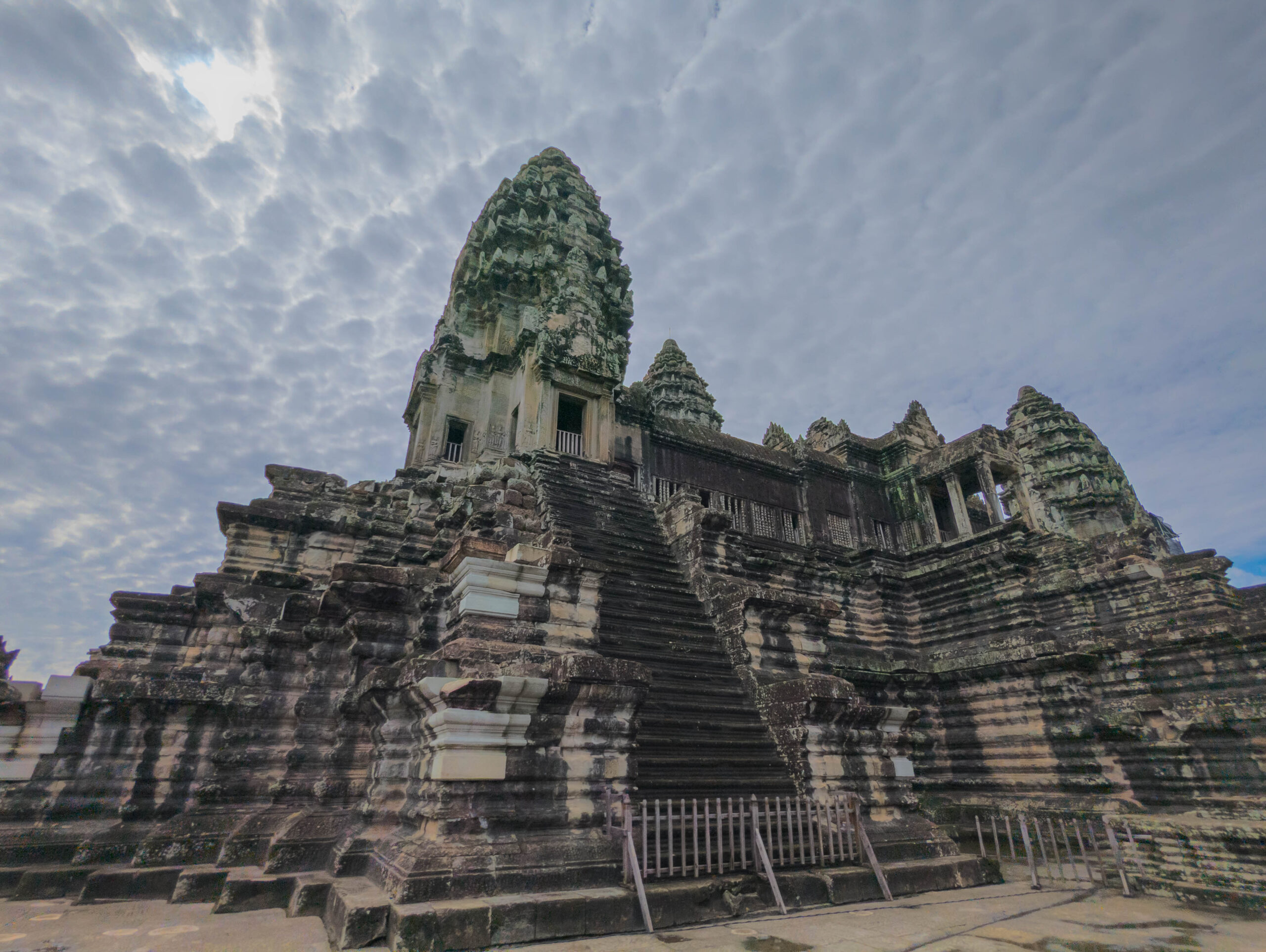
The area all around is flat and it is subject to the monsoon weather pattern: a rainy season followed by a dry season. Part of the reason for Angkor’s success was the people’s mastery at managing the resource of water: collecting it in vast reservoirs and using it for irrigation through the dry season through a complex system of channels, enabling rice to be harvested throughout the year.
How they dealt with the inevitable mosquito problem, the sources I read did not explain. Perhaps they didn’t. I certainly made use of the spray I’d thoughtfully bought on Taobao before coming.
I was there in June: just before the coming rains. There were dry channels dug around the complex, but also lakes of still water, bearing reflections of the tropical trees and stone towers, and the strange cloud patterns. Even through the clouds the sun was a powerful force here: you could always feel where it was, even if you couldn’t see it.
The temple itself is huge, filled with large reliefs depicting scenes from the Hindu epics: Mahabharata and Ramuyana. Gods and demons doing battle. Heroes and monkeys. Over the course of its history, political and religious allegiances shifted. It was a Hindu shrine, then a Buddhist one. The Buddhists took a mild view of all the Hindu iconography, and left it intact. But when the Hindus took over again they did not reciprocate, and many of the Buddhas have sadly had their heads knocked off.
Angkor Wat is not just one large temple, though. It’s a whole complex of buildings, and the ruins of many others. Each king commissioned a temple inside the city, and now these are scattered throughout the surrounding forest, in more or less greater states of decay.
One such temple is the Bayon temple, at the centre of the complex which is circumscribed by an almost square moat-like structure. The complex is famous for its giant stone faces of the God-King King Jayavarman VII, in a boddhisatva form.
The walls of the temple are covered as well in sculptures depicting life in the city: fishing and sport, rice harvesting, boozing and dealing with visiting Chinese merchants.
After a break for lunch (some kind of stew inside a coconut. Sorry, but I’m not a foodie) there was time for one more temple, and perhaps the most evocative of all. Much of the complex is in some way affected by the jungle surrounding it, but Ta Prohm is famous for the way it has been semi-engulfed by the trees, with roots and branches growing through the stones. It was – I am told – used in the Angelina Jolie Tomb Raider movie as a backdrop. And it certainly has a strong mythical element to it. Nowadays Indian and Israeli experts are helping to excavate and restore the temple, but now its overgrown state is part of its charm.
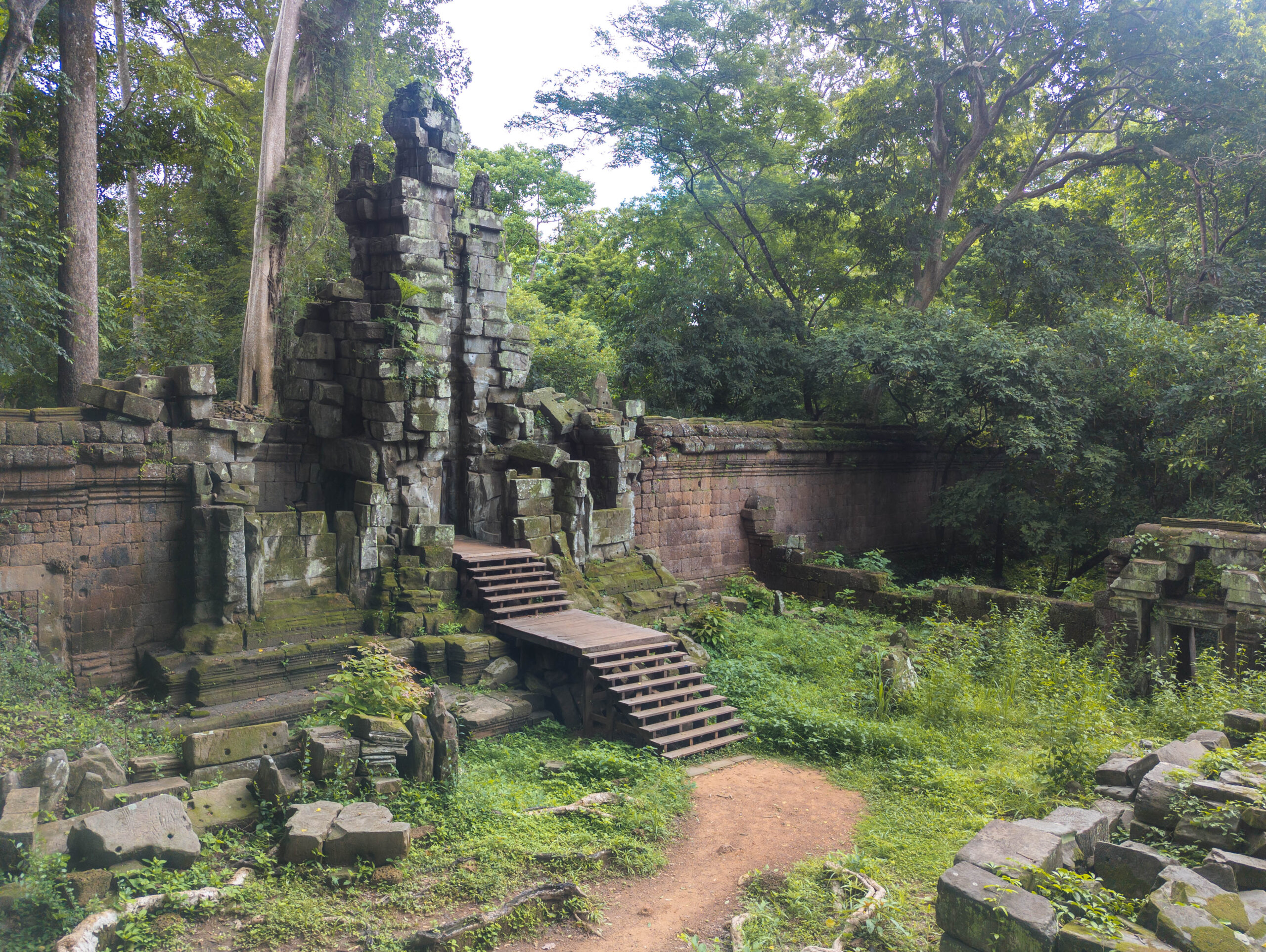
When I got there it was more or less deserted: one or two buddhist monks in their bright orange robes. An instagrammer doing handstands in an abandoned doorway for her photographer / boyfriend. Some local waifs enjoying the sudden downpours and helping tourists like me to navigate the stepping stones across what had just now been dry paths.
It can’t have the same air of mystery it must have had when the first European explorers came across these ruins, several hundred years ago, after they’d been abandoned for a similar length of time. At the time, they explained it all away as being the work of Alexander the Great, or this or that Roman Emperor. They could not comprehend that this was once the very centre of an Empire that is now almost all but forgotten.
But, that’s the way of things. Sooner or later the forest will reclaim whatever things we now think of as being permanent.
Fascinating as they are, there is such a thing as enough ruined temples, even ones with jungle growing out of them. I rested up back at the hotel.
The next day, it was time to visit some elephants. To be more precise, the ones living at Kulen Elephant Forest. A small jeep bounced and rolled its way along some very rutted roads, carrying myself and a few other European tourists into the forest. We emerged into a small clearing with a wooden building where we made some kind of cake (I already said, I’m not a foodie) for the elephants out of various unappetising ingredients.
The elephants themselves are retired from their labours of hauling stones around the Angkor complex, and now spend their days wandering around the nearby forest along with their “mahouts”, strolling back when they know it’s time for the tourists to give them some cake.
Covid was a real gut-punch to this, and similar, organizations which are trying their best to make elephant conservation a sustainable business model in Cambodia. These creatures seemed happy enough: hanging around in their friendship groups, with no particular place to go.
The tour guide was evidently in love with the elephants, and more than once announced his envy of the life of the mahouts, just following their elephant partner around. To be fair, it didn’t seem like a bad life, though one gets the impression it doesn’t leave much time for other things.
My final stop in Cambodia was to see Tonle Sap lake. During the dry season this enormous lake feeds into the Mekong River, and its water level goes down. During the rainy season, though, the flow of water reverses and the overflowing Mekong spills out into the lake area, raising the water level by some 10 metres.
Despite these variations, people still make it their home. Indeed, it is literally the home for some people: there are enormous floating villages comprising houses, restaurants and even a church resting on empty barrels, that rise and fall with the water level.
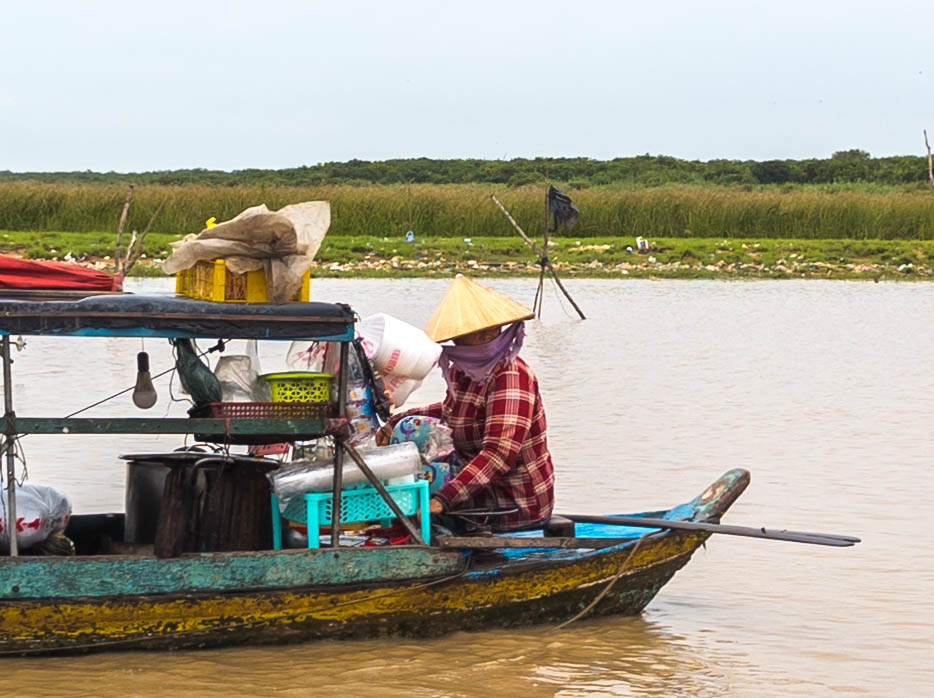
Whole lives are lived out in this strange setting, something like that Kevin Costner movie, Waterworld. People think nothing of jumping off the side of their house into the muddy water.
One shop we visited was selling handbags, shoes and other items made of crocodiles. Just outside, living crocodiles were climbing over each other, waiting their turn to be turned into the produce. There were floating schools and young children everywhere. Child mortality here is high, and it’s not hard to see why: the water is not in any way clean. But in a world that is becoming homogenised in so many ways, it’s refreshing to see something so different.
After just two days it was time to leave. I didn’t stay long enough to form any reliable impressions of the place, but Cambodia had a wholesome quality to it. A fascinating but little-understood history, and a present-day that is somewhat removed from modernity as it plays out in places like Europe or even China. Poor by many standards, yet (or perhaps, because of that) retaining some down-to-Earth happiness. A place in thrall to the elements of fire in the form of the relentless heat, water in the form of the ebb and flow of the rivers, and the earth from which the forests spring out and reclaim the stones. And still a very spiritual place, with as many modern temples as ancient ones.
With my fantasy novel still burning a hole in my head, there was plenty of inspiration to feed upon here!
